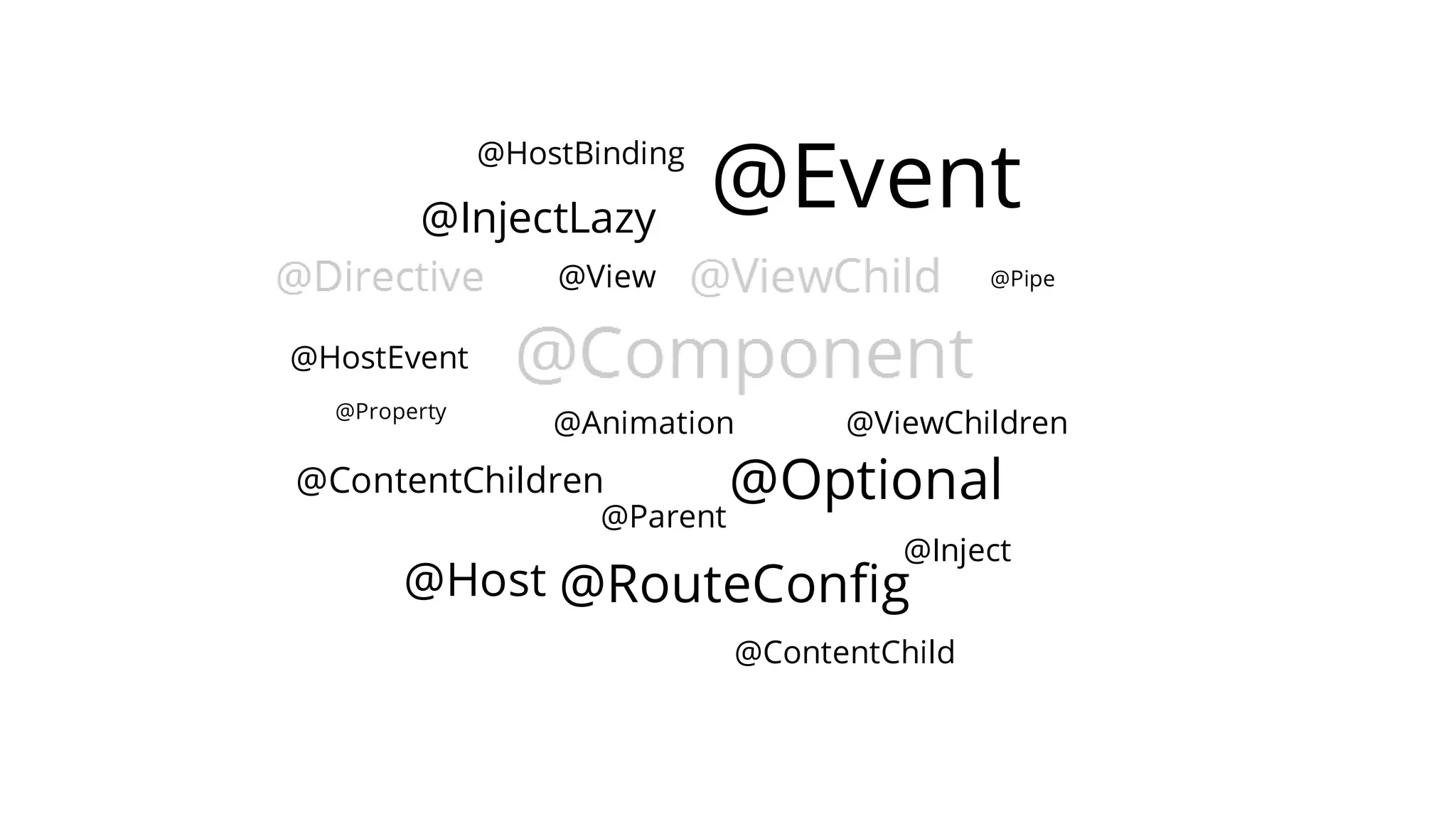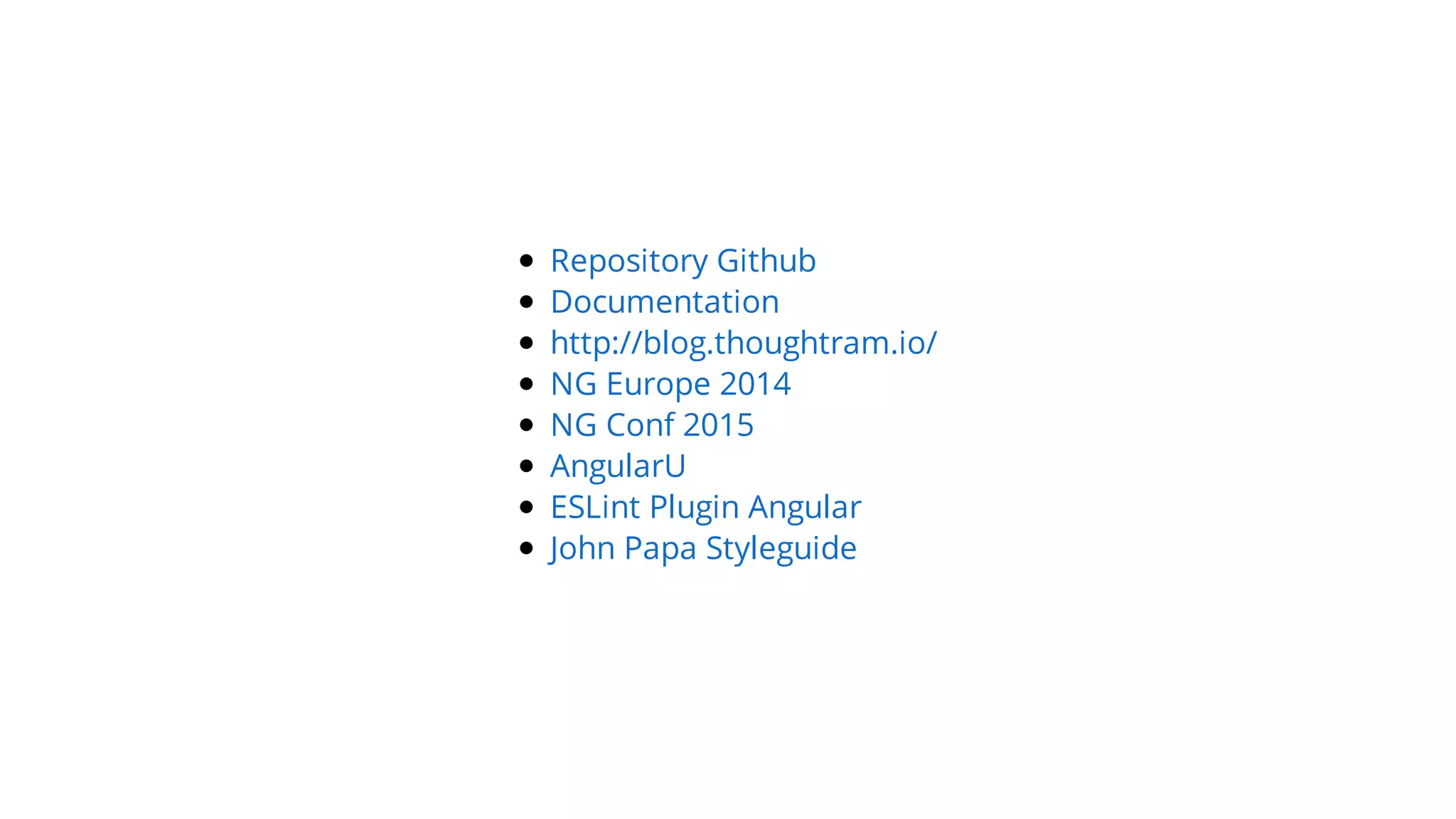This document provides an overview of key concepts in Angular 2, including: - Components form the building blocks of an Angular 2 application and use metadata to configure selector, template, and more. - Templates can be defined inline using TypeScript template strings or external template files. - Property and event bindings allow components to share data and handle user input. - Dependency injection provides services to components through their constructors similarly to AngularJS but with additional capabilities like child injectors. - Pipes allow transforming values in templates similarly to filters in AngularJS. - Annotations like @Component and @View configure components. - The framework is actively developed with an
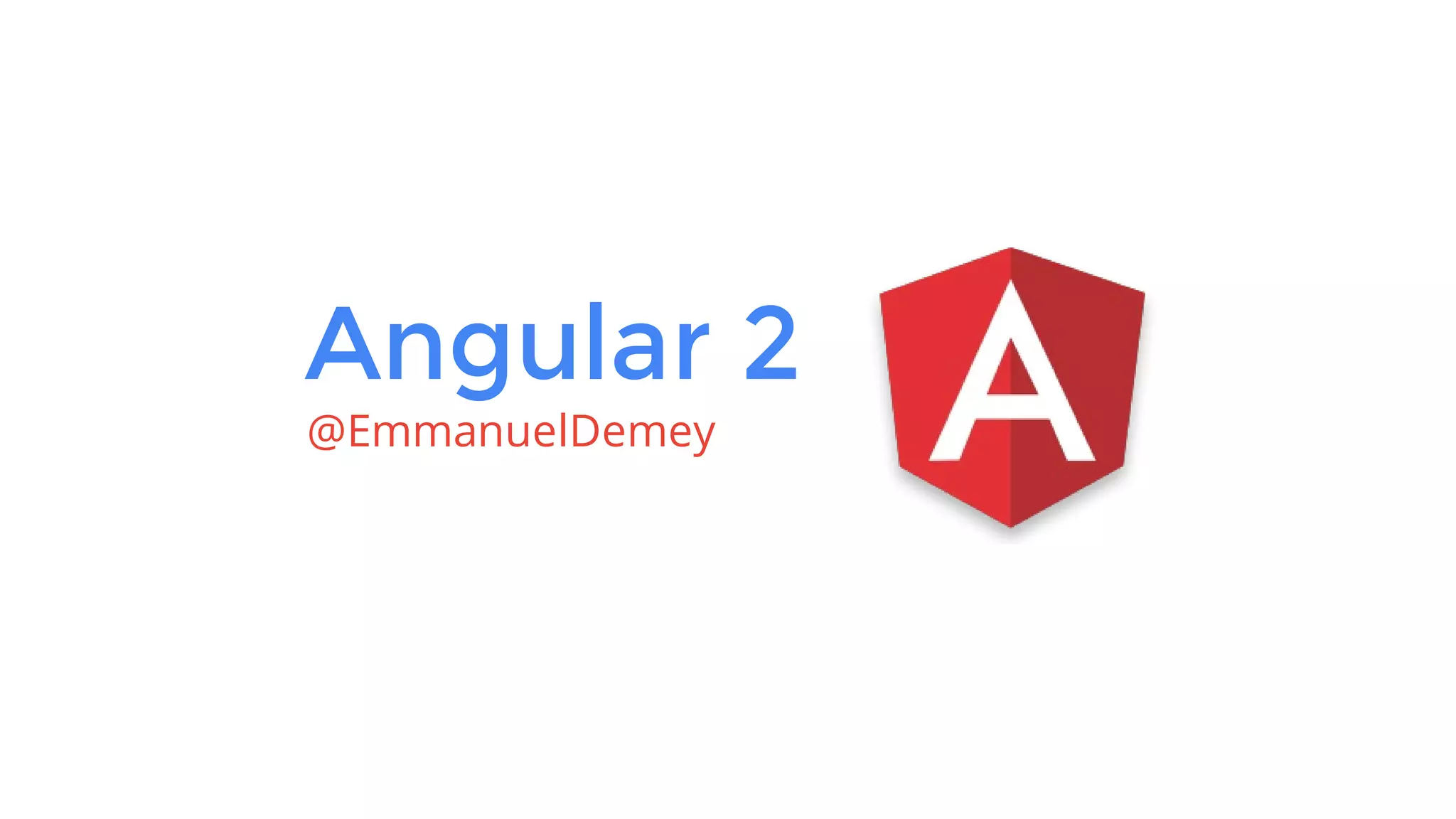



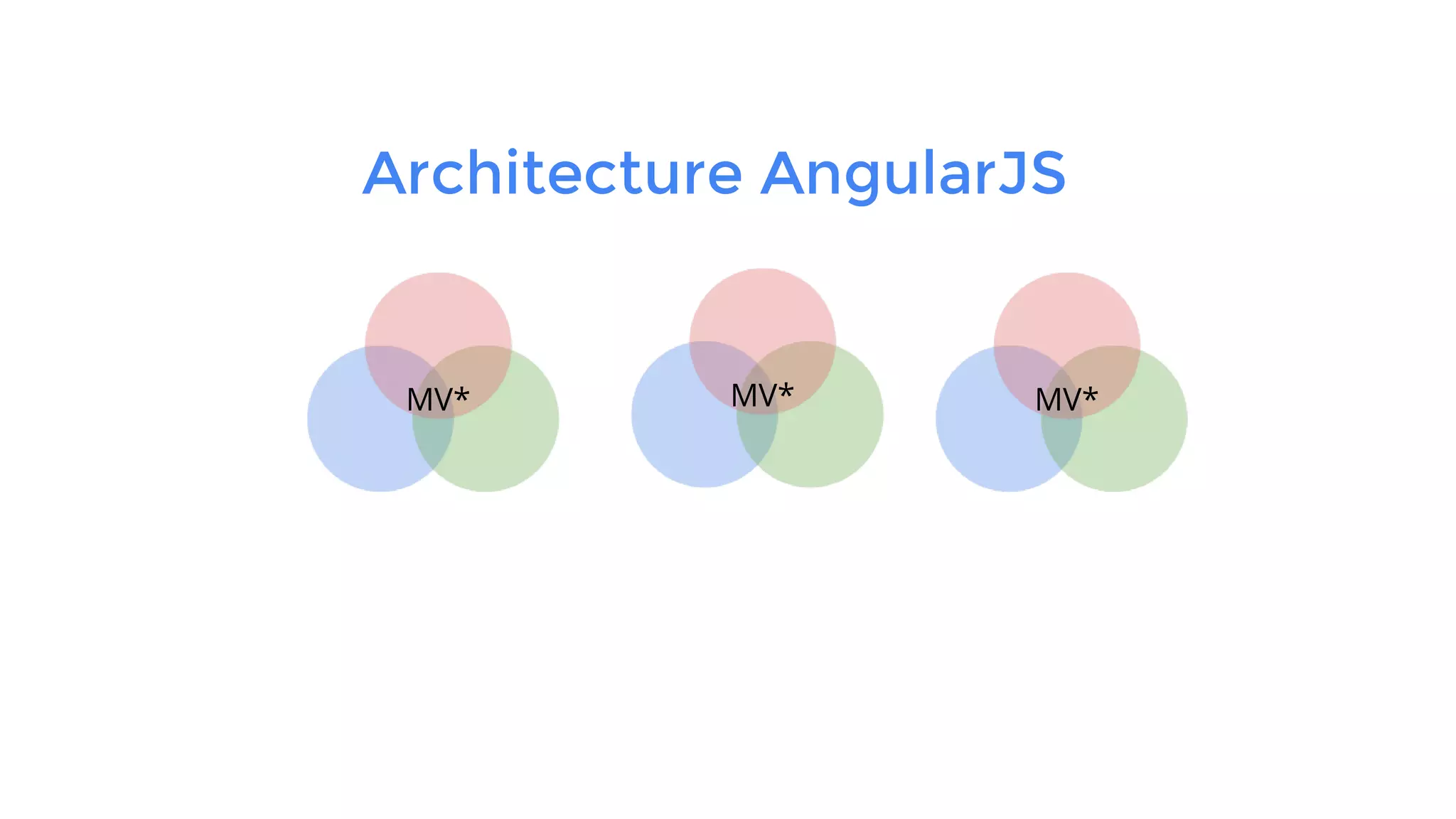

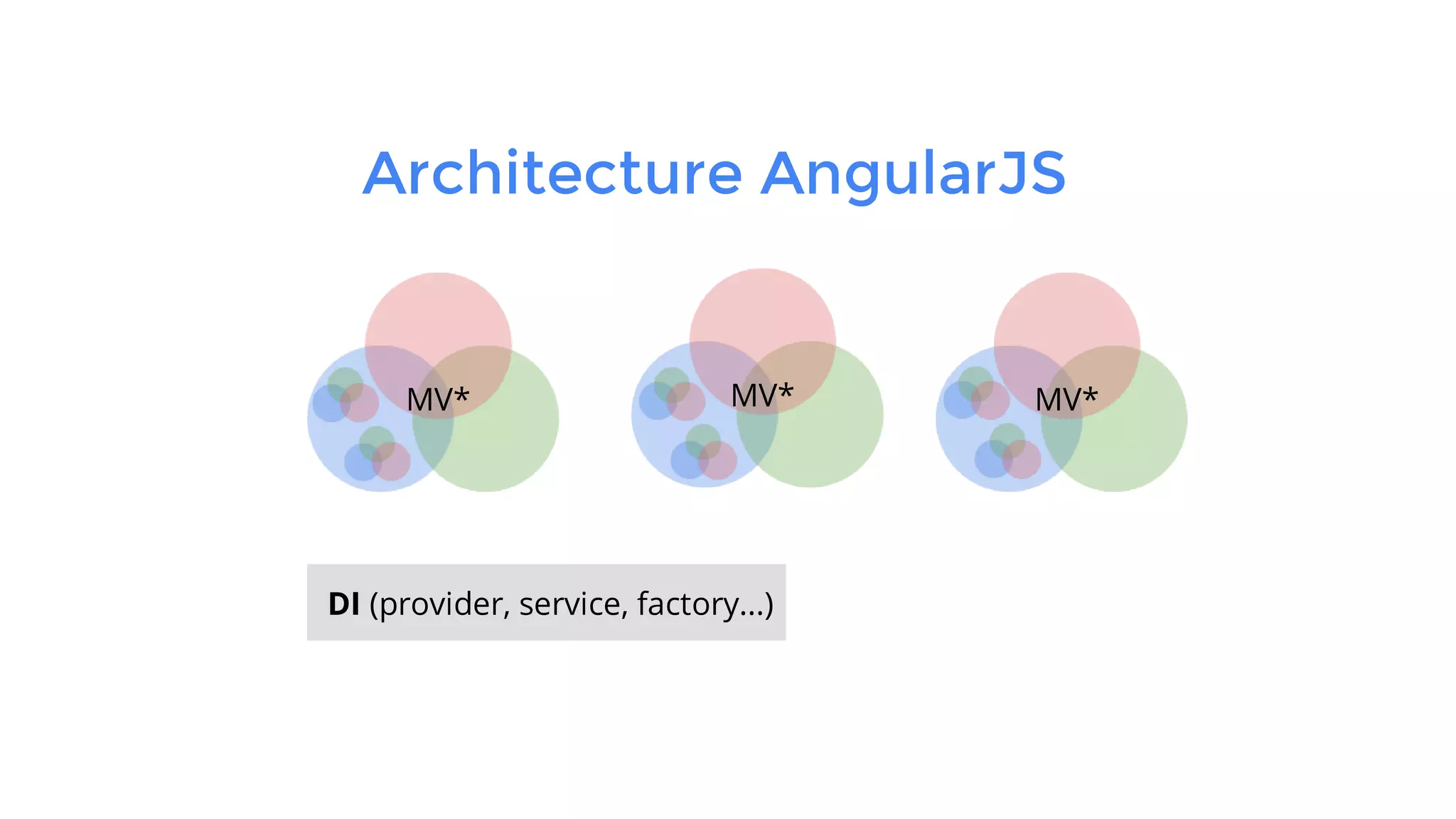
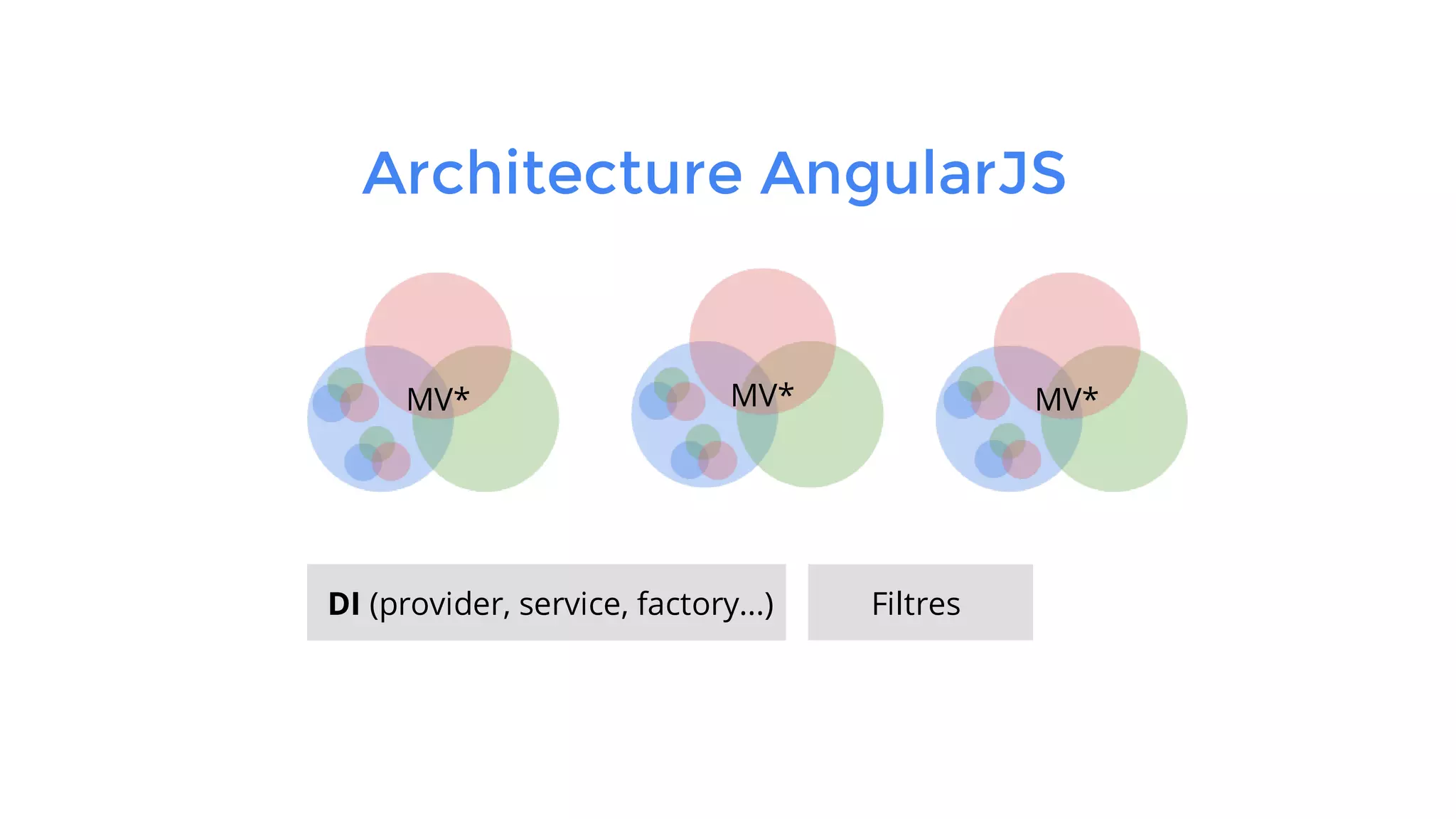

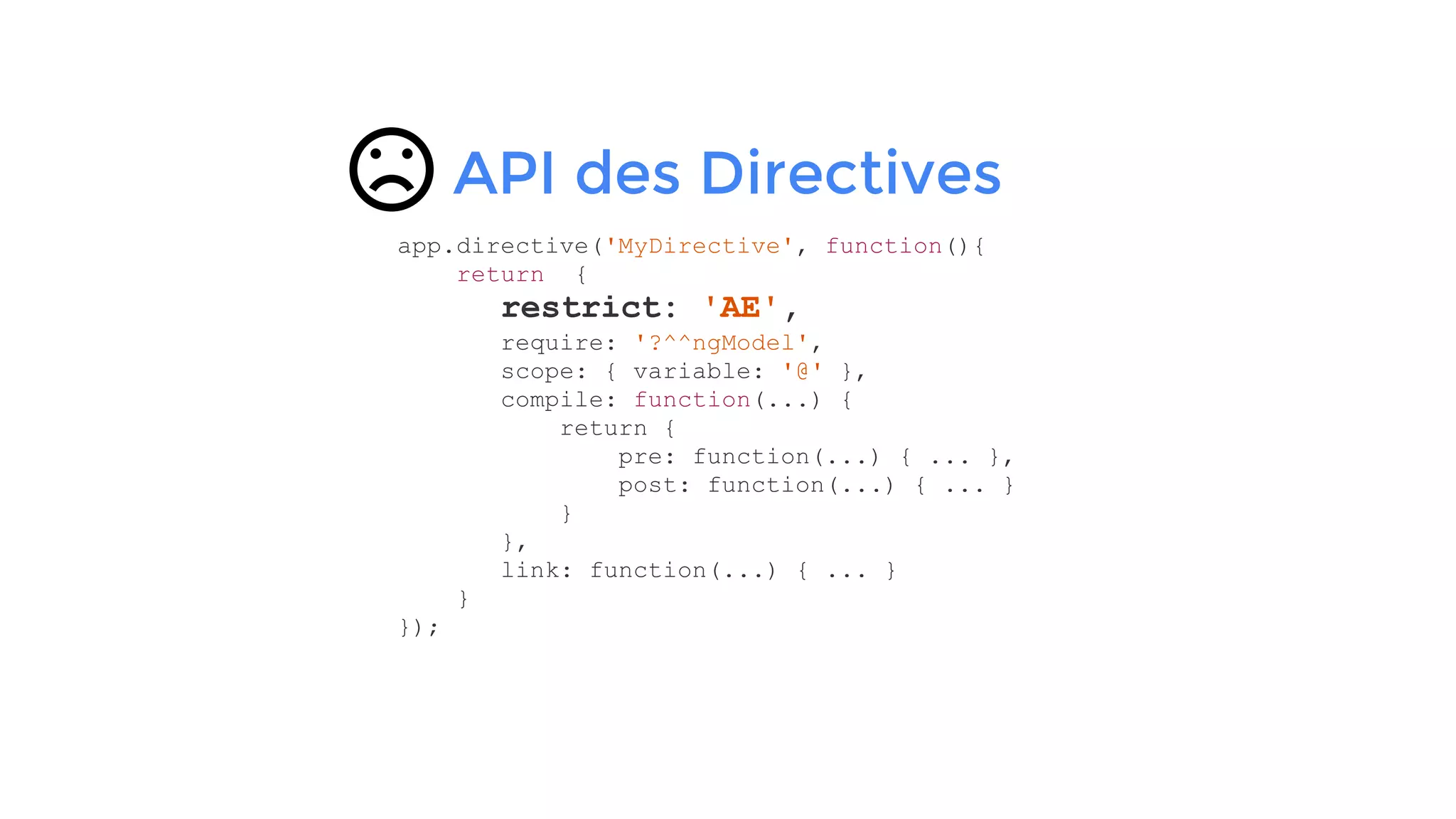
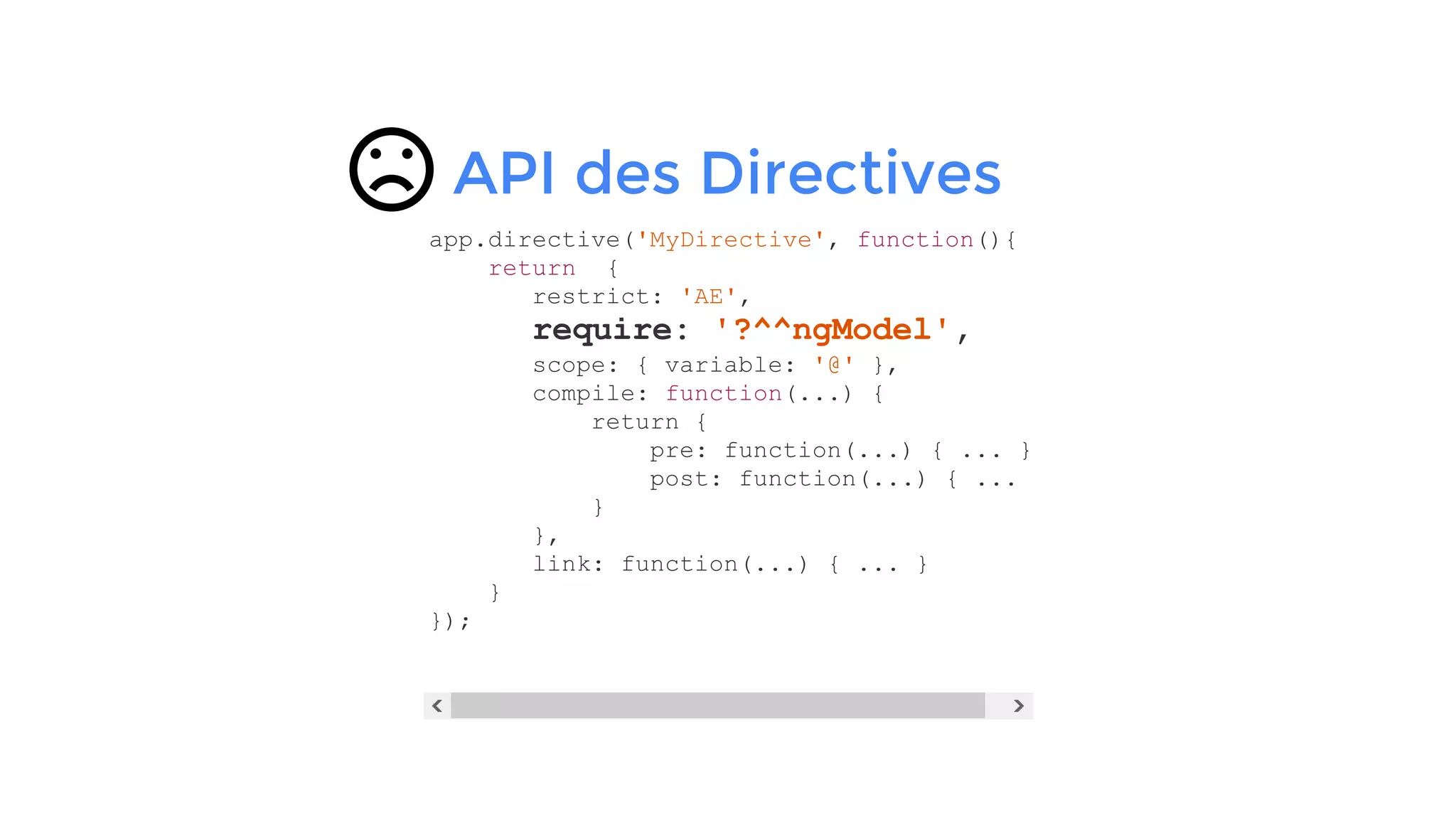
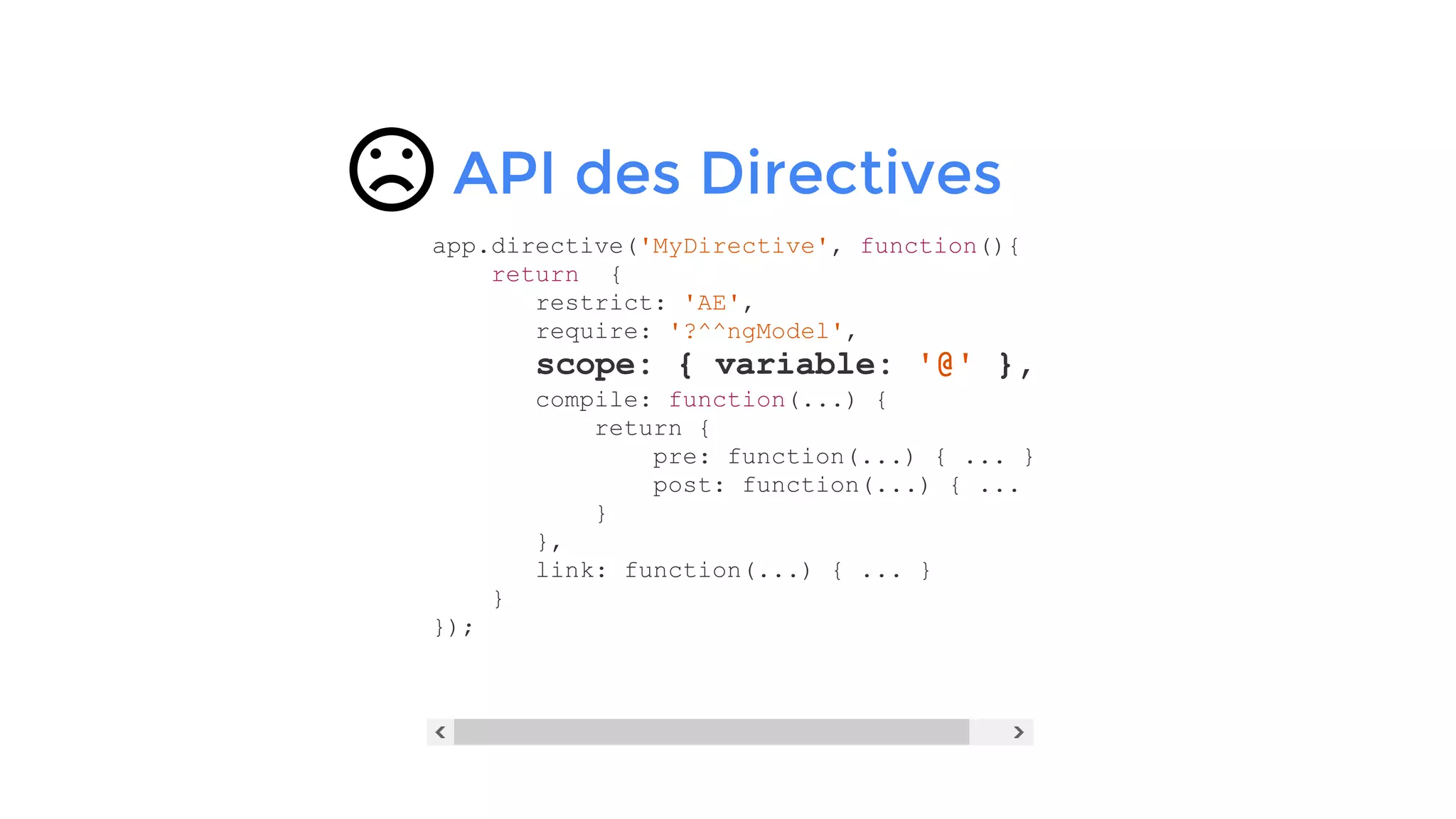

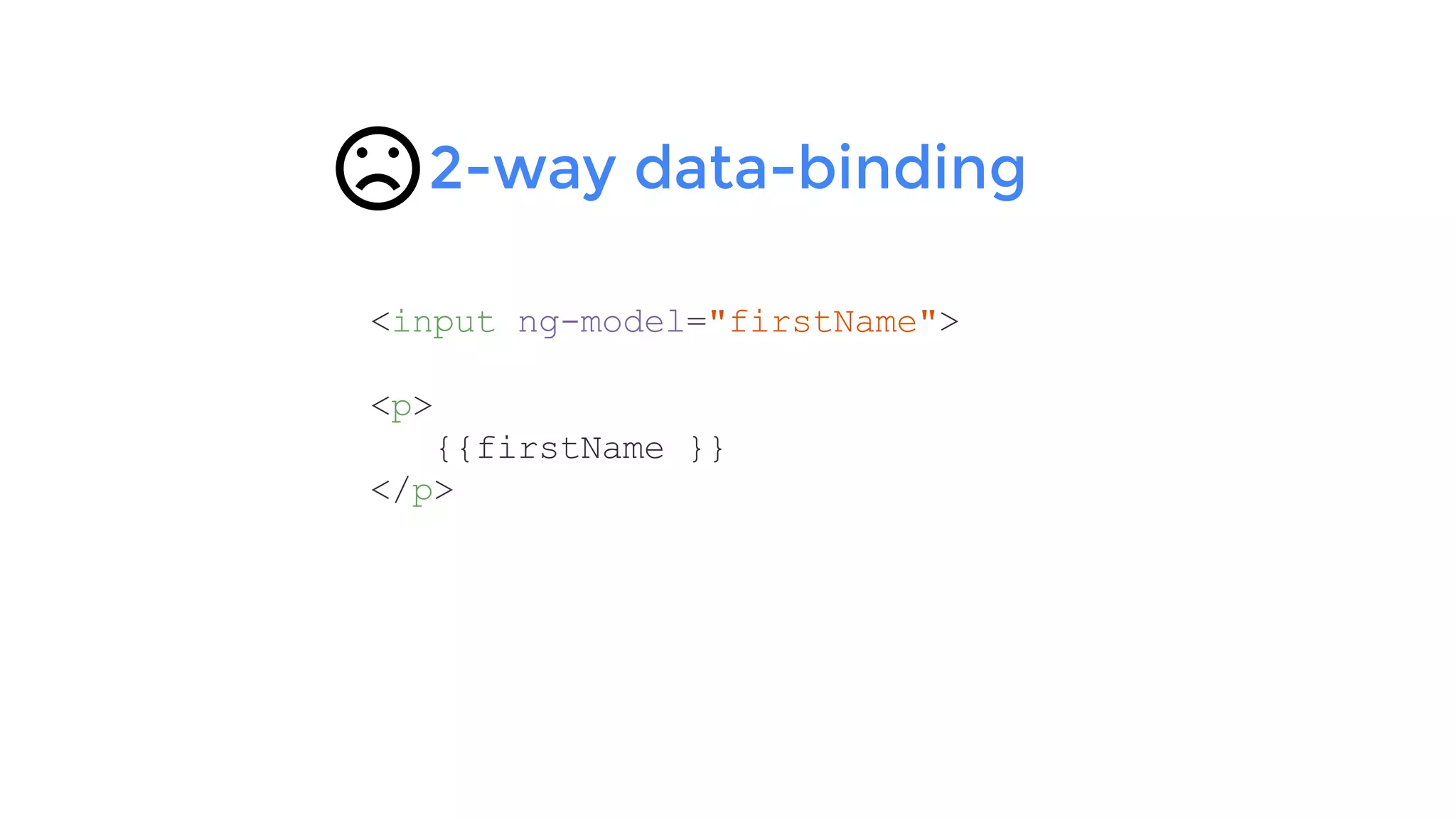
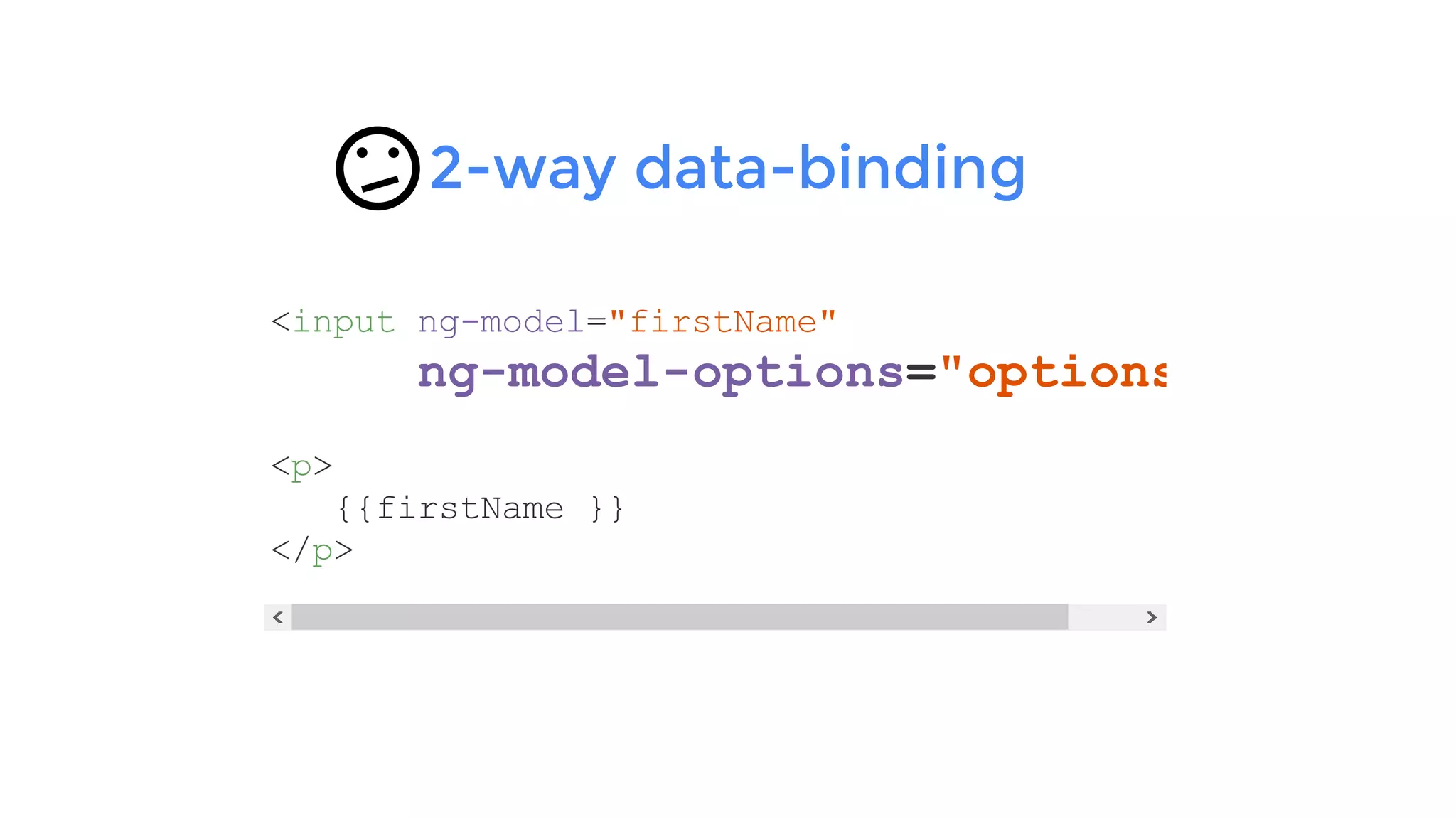


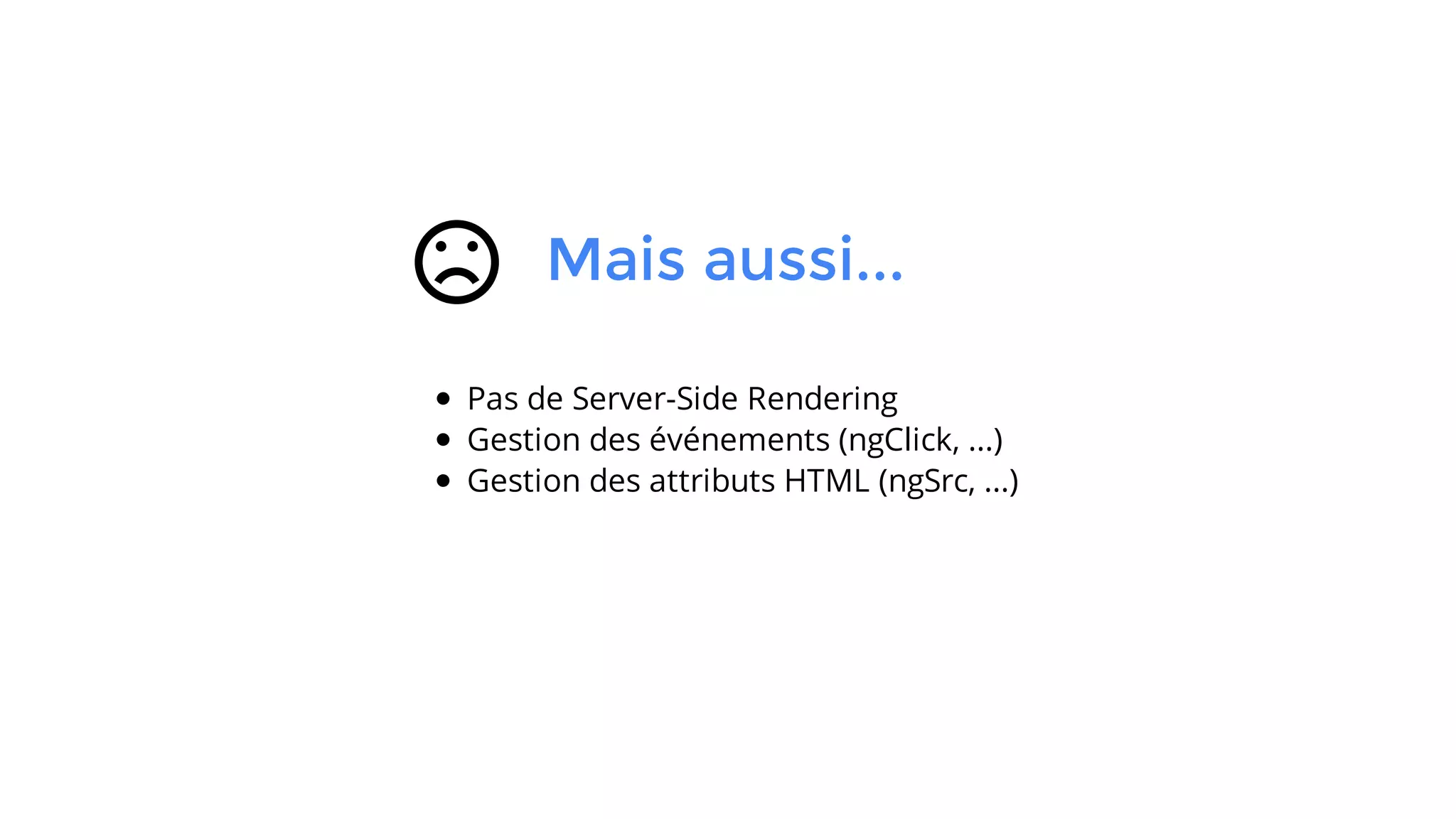




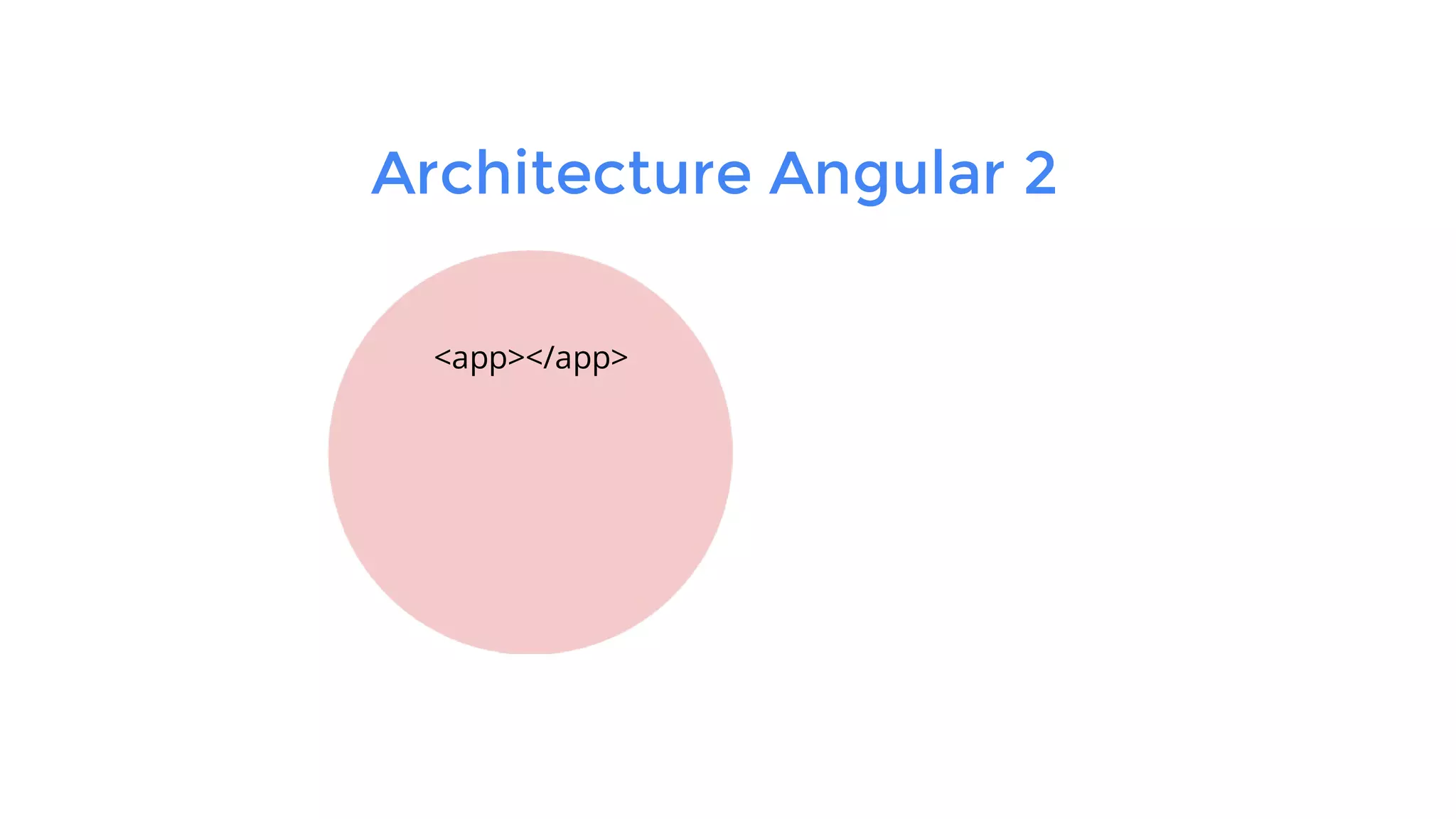

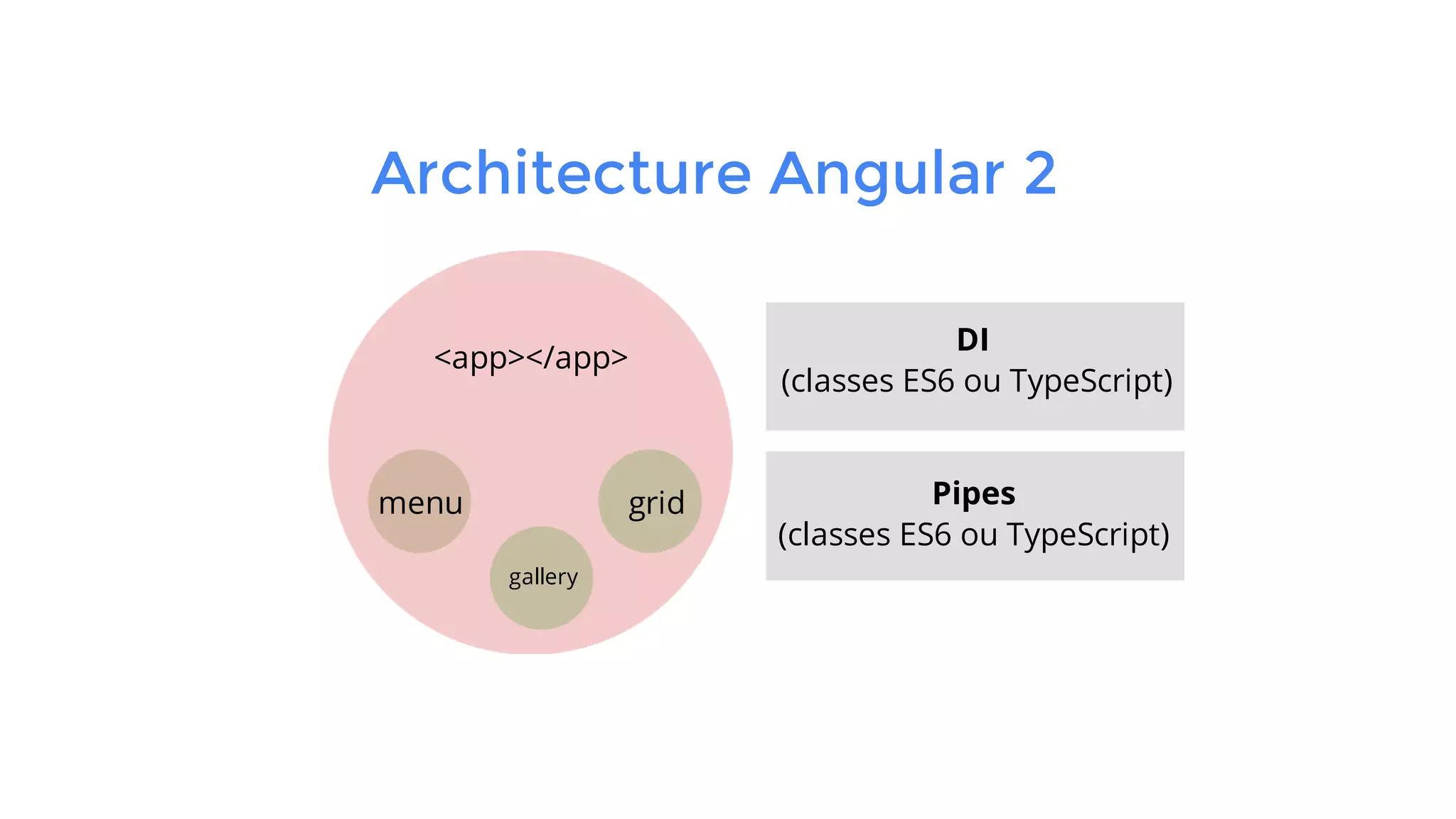


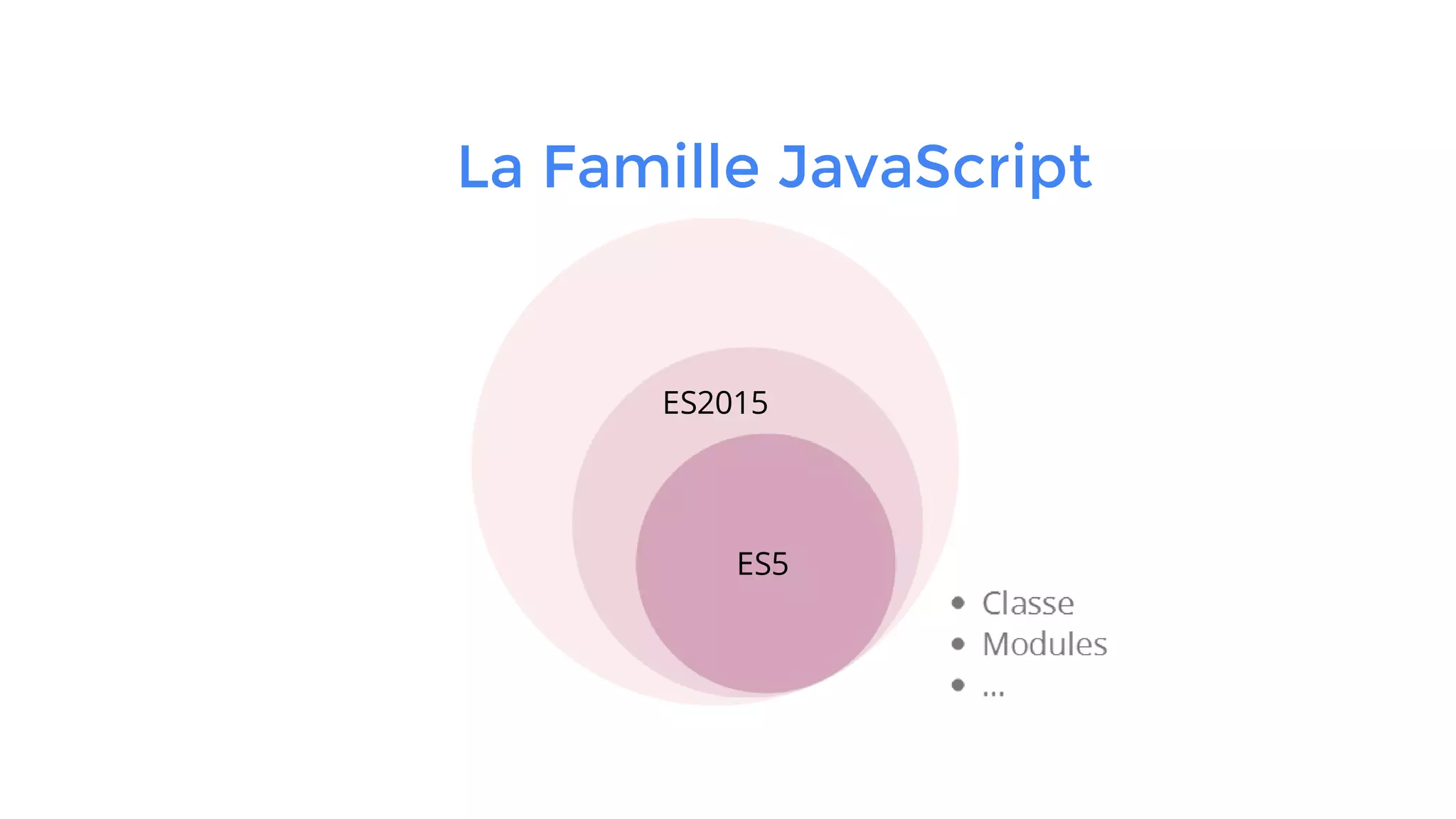
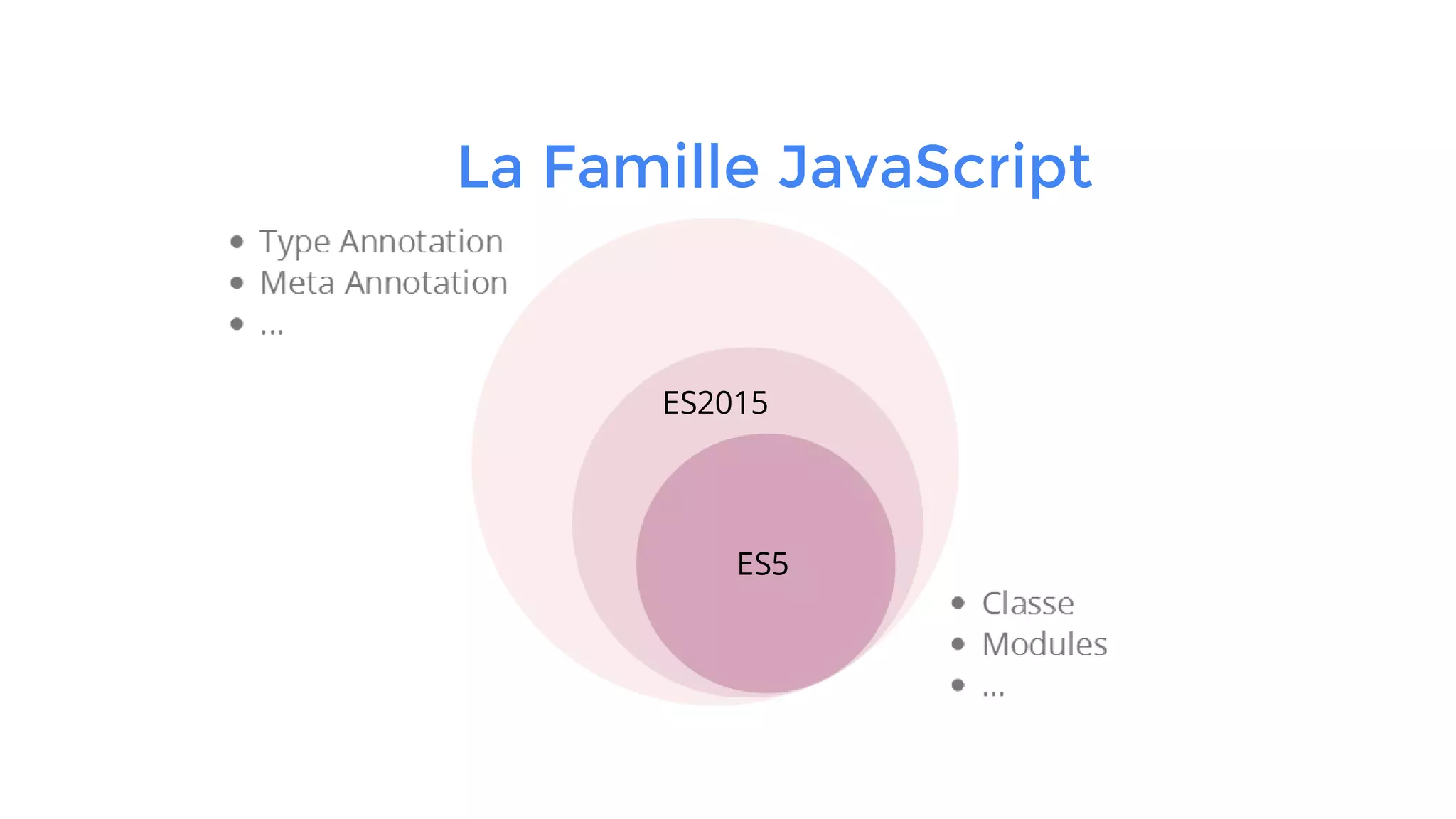
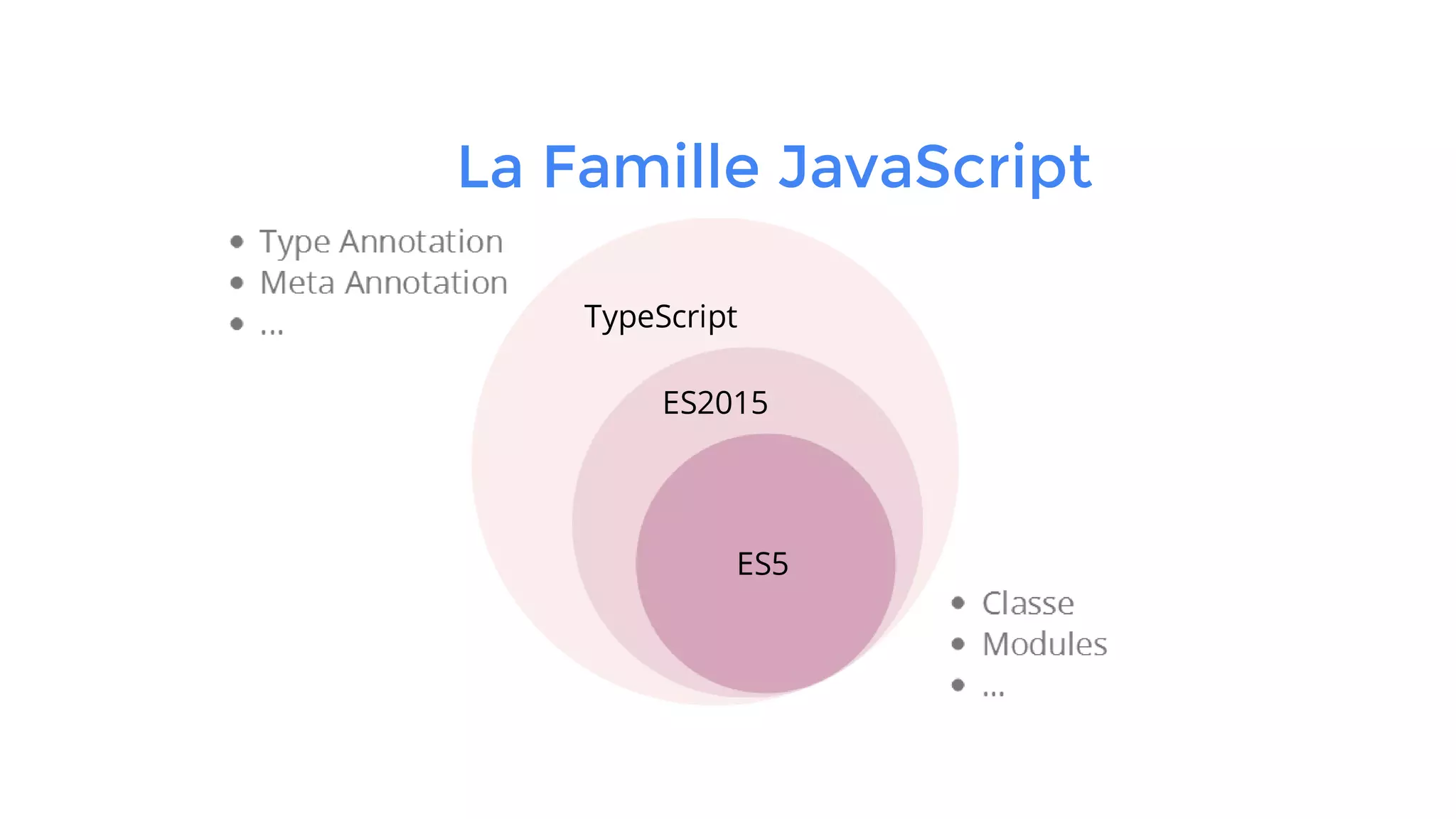
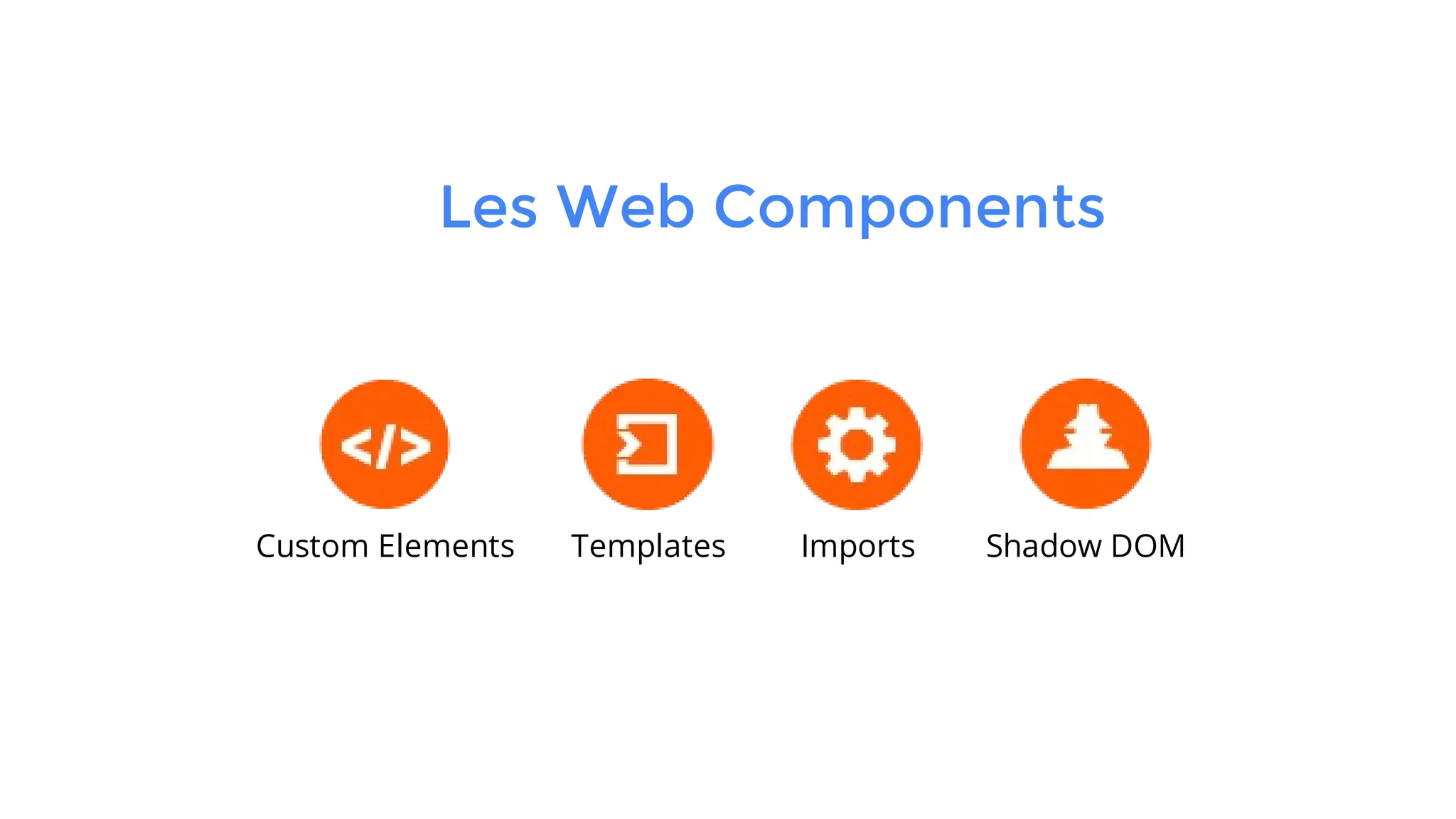
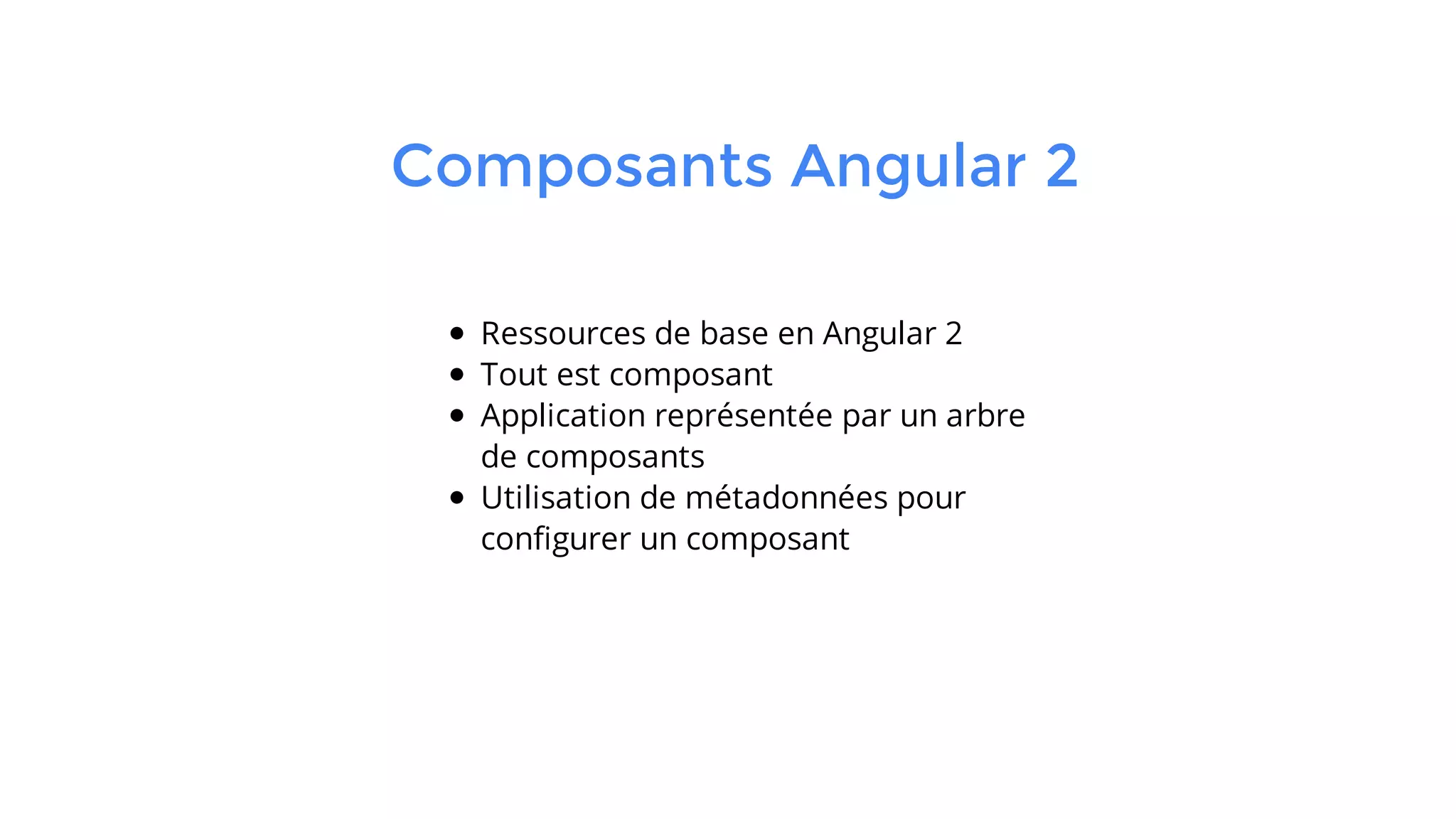
![//<my-app></my-app> function MyAppComponent() { } MyAppComponent.annotations = [ new angular.ComponentAnnotation({ selector: 'my-app' }), new angular.ViewAnnotation({ template: "<main>" + "<h1> This is my first Angular2 app</h1>" + "</main>" }) ]; Composant version ES5](https://image.slidesharecdn.com/technozaure-151006181515-lva1-app6891/75/Technozaure-Angular2-33-2048.jpg)
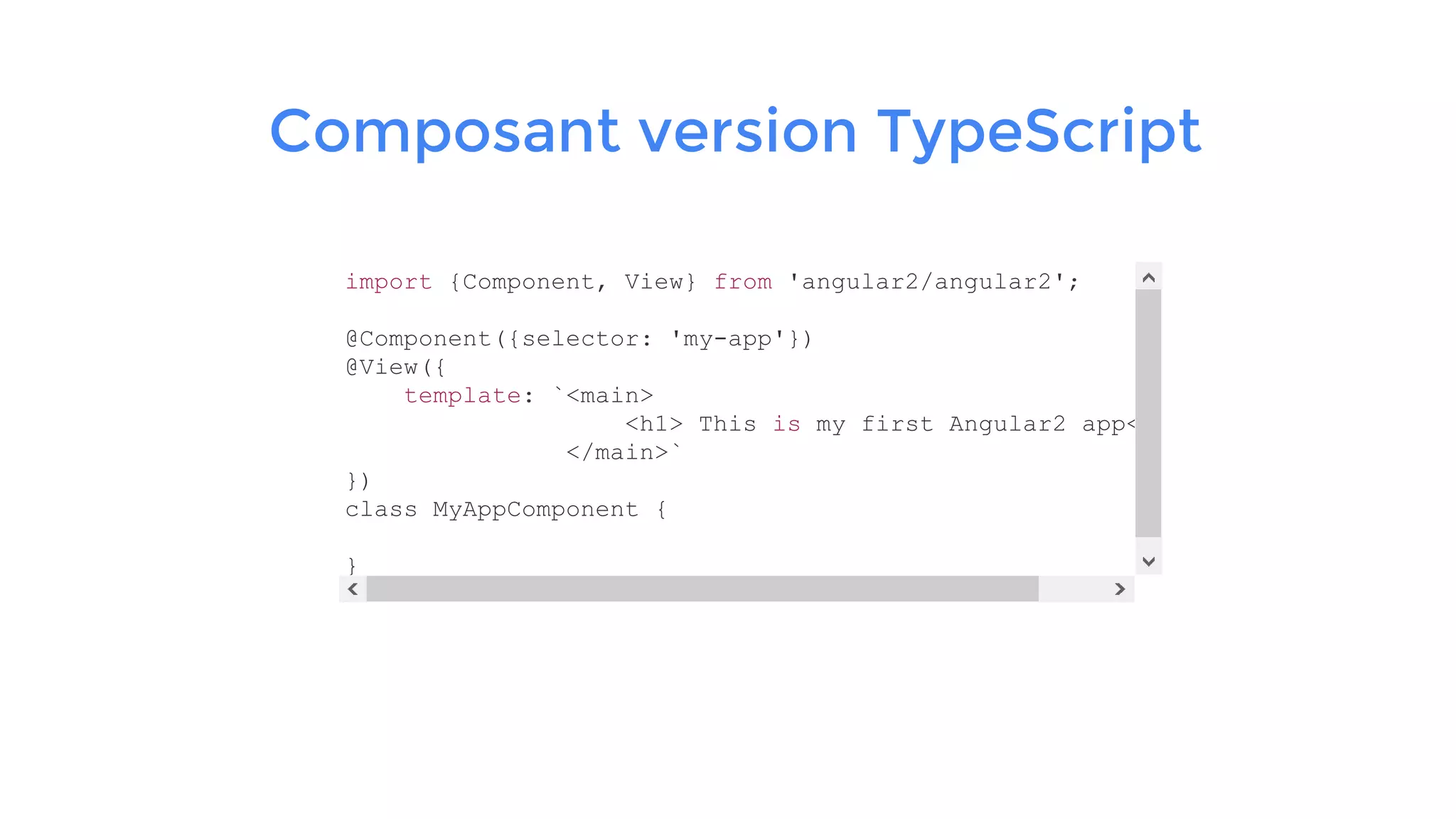
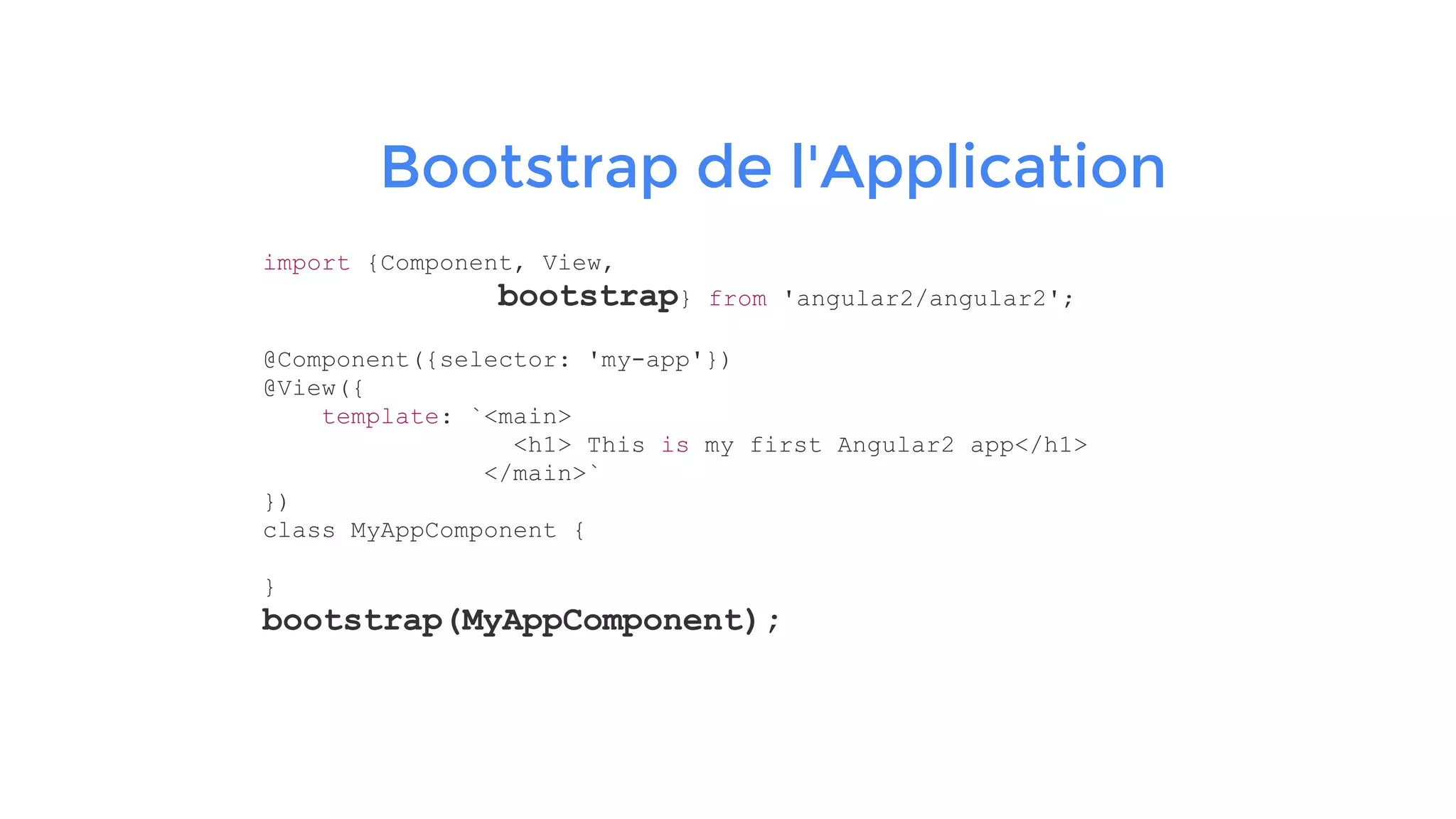
![Binding Root Cpt Child1 Cpt Child2 Cpt [property]="expression" (event)="update()"](https://image.slidesharecdn.com/technozaure-151006181515-lva1-app6891/75/Technozaure-Angular2-36-2048.jpg)
![Property Binding <input [attr]="expression" /> Accès à toutes les propriétés des éléments HTML Possibilité de définir de nouvelles propriétés Compatibilité avec d'autres spécifications](https://image.slidesharecdn.com/technozaure-151006181515-lva1-app6891/75/Technozaure-Angular2-37-2048.jpg)

![Property Binding <body> <h1 [textContent]="'My First Angular2 app'"> </h1> </body>](https://image.slidesharecdn.com/technozaure-151006181515-lva1-app6891/75/Technozaure-Angular2-39-2048.jpg)
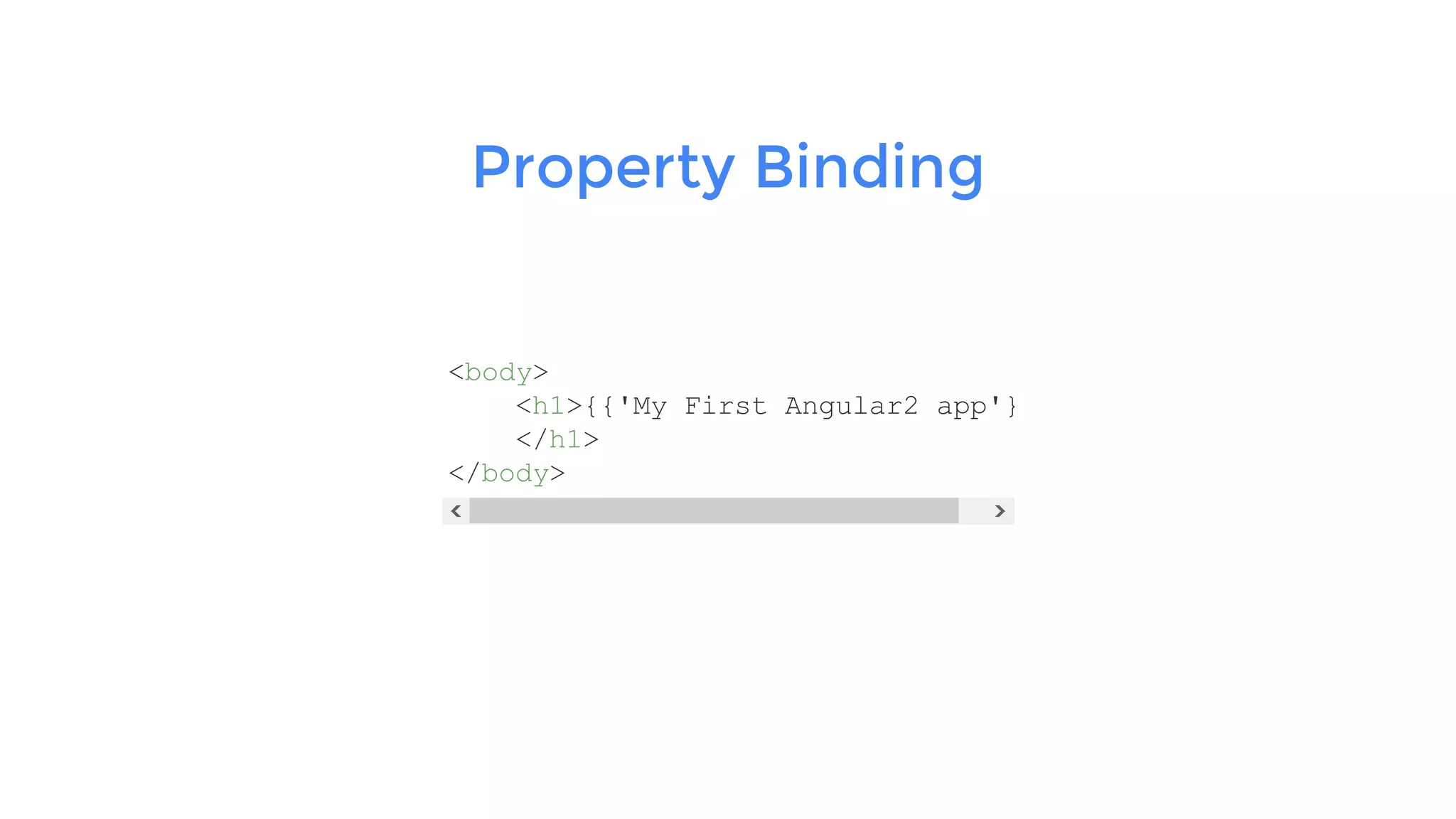
![Property Binding //<beerItem [beer]="'Maredsous'"></beerItem> @Component({ selector: 'beerItem', properties: ['beer'] }) @View({ template: `<section> <h2>{{beer}}</h2> <button>Je veux celle-ci !</button> </section>` }) class BeerItem{ beer: String; }](https://image.slidesharecdn.com/technozaure-151006181515-lva1-app6891/75/Technozaure-Angular2-41-2048.jpg)
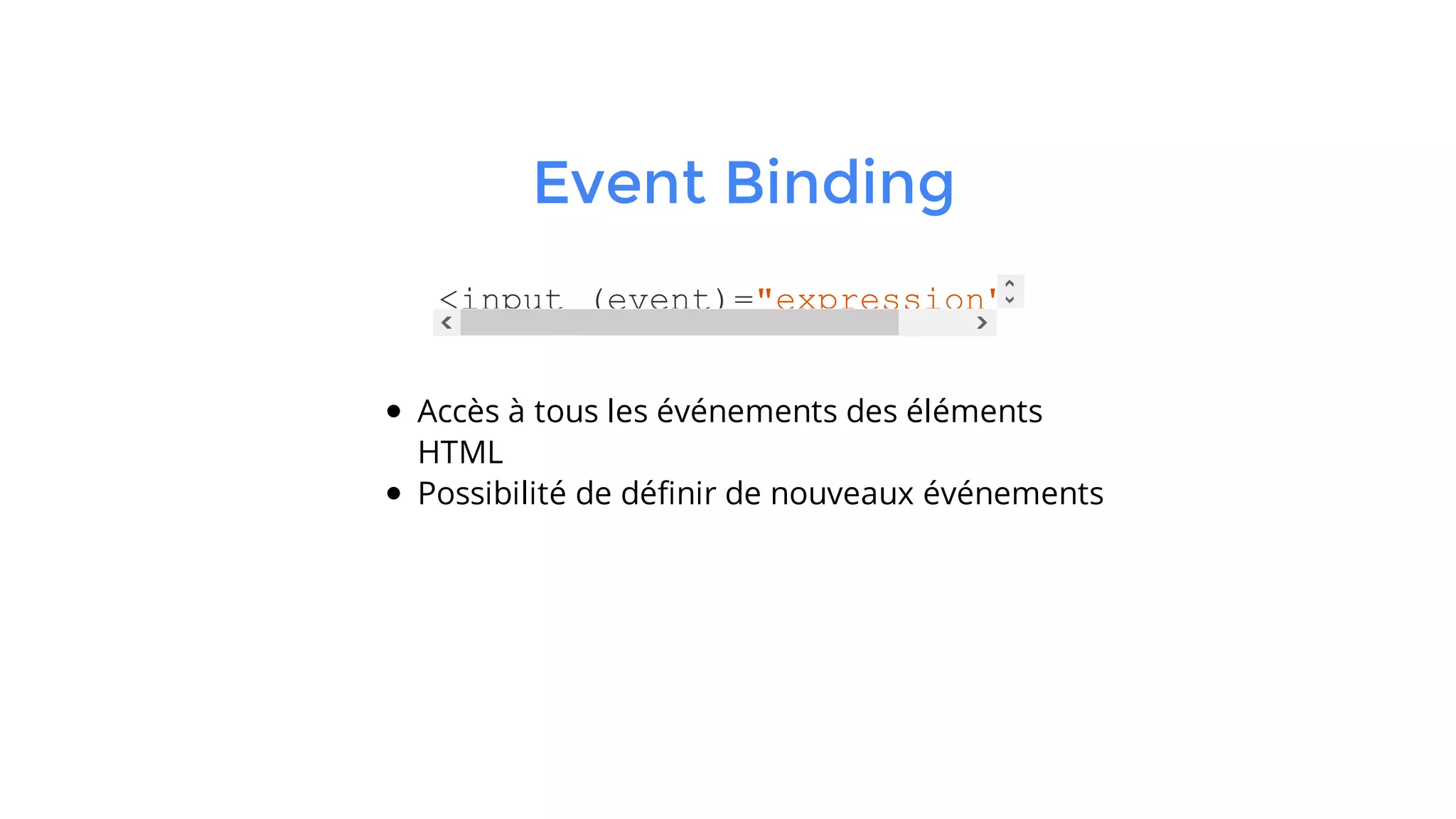
![Event Bindings //<beerItem [beer]="'Maredsous'" (selectBeer)="sendToBeerTap()"></beerItem> @Component({ selector: 'beerItem', properties: ['beer'], events: ['selectBeer'] }) @View({ template: `<section> <h2>{{beer}}</h2> <button (click)="selectItem()">Je veux celle-ci !</button> </section>` }) class BeerItem { beer: String; selectBeer: EventEmitter; selectItem() { this.selectBeer.next(this.beer); } }](https://image.slidesharecdn.com/technozaure-151006181515-lva1-app6891/75/Technozaure-Angular2-43-2048.jpg)
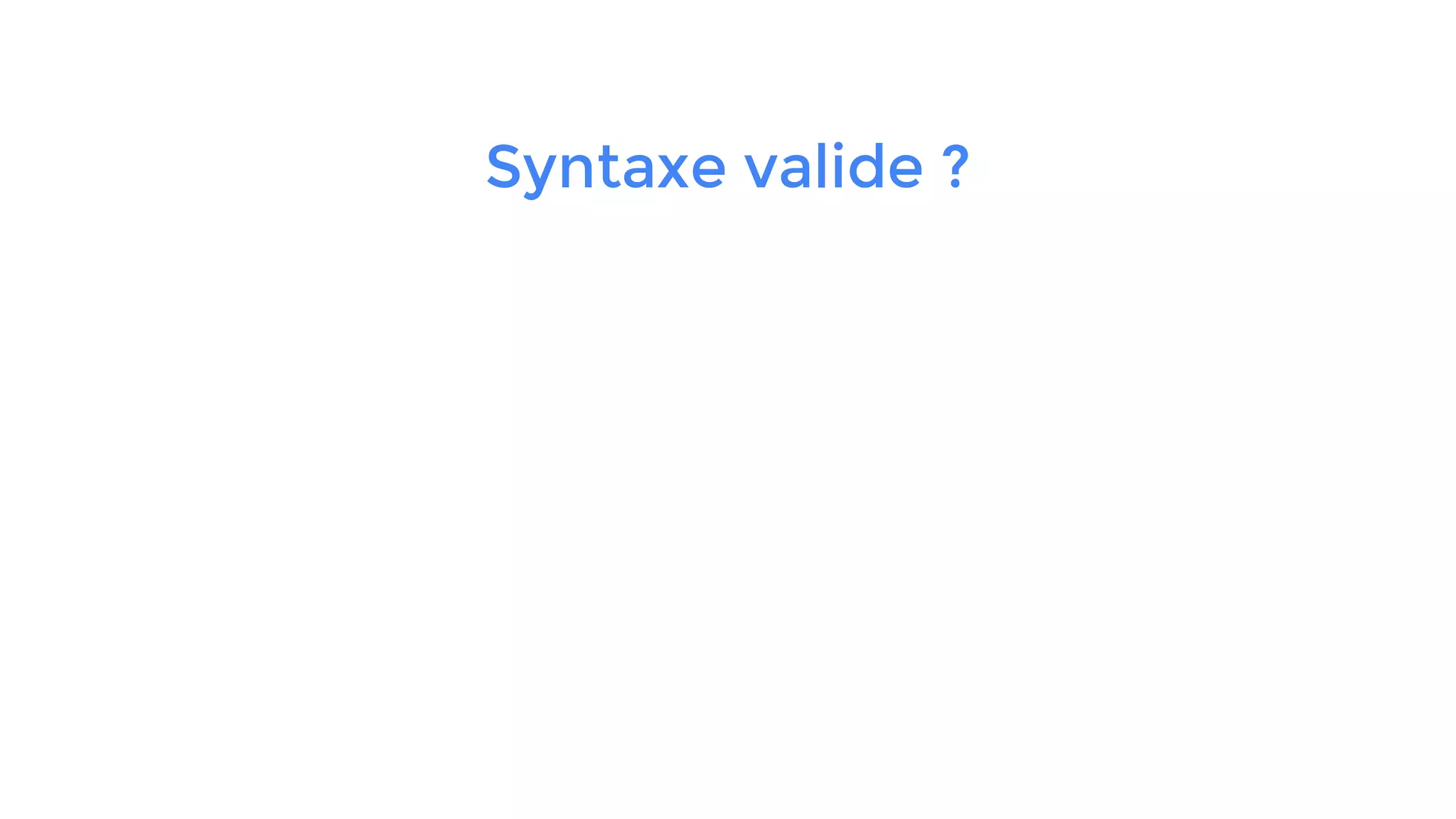

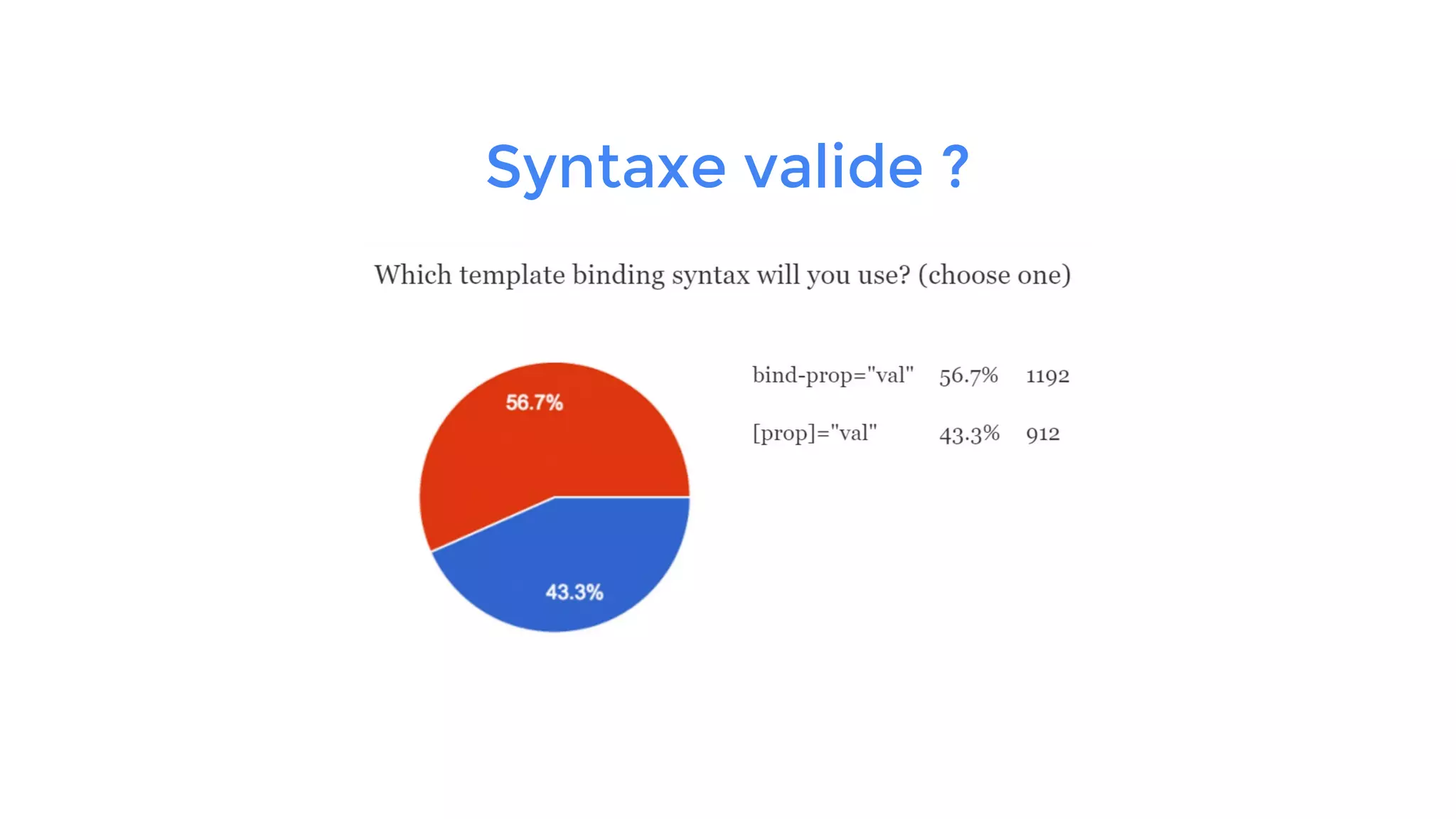
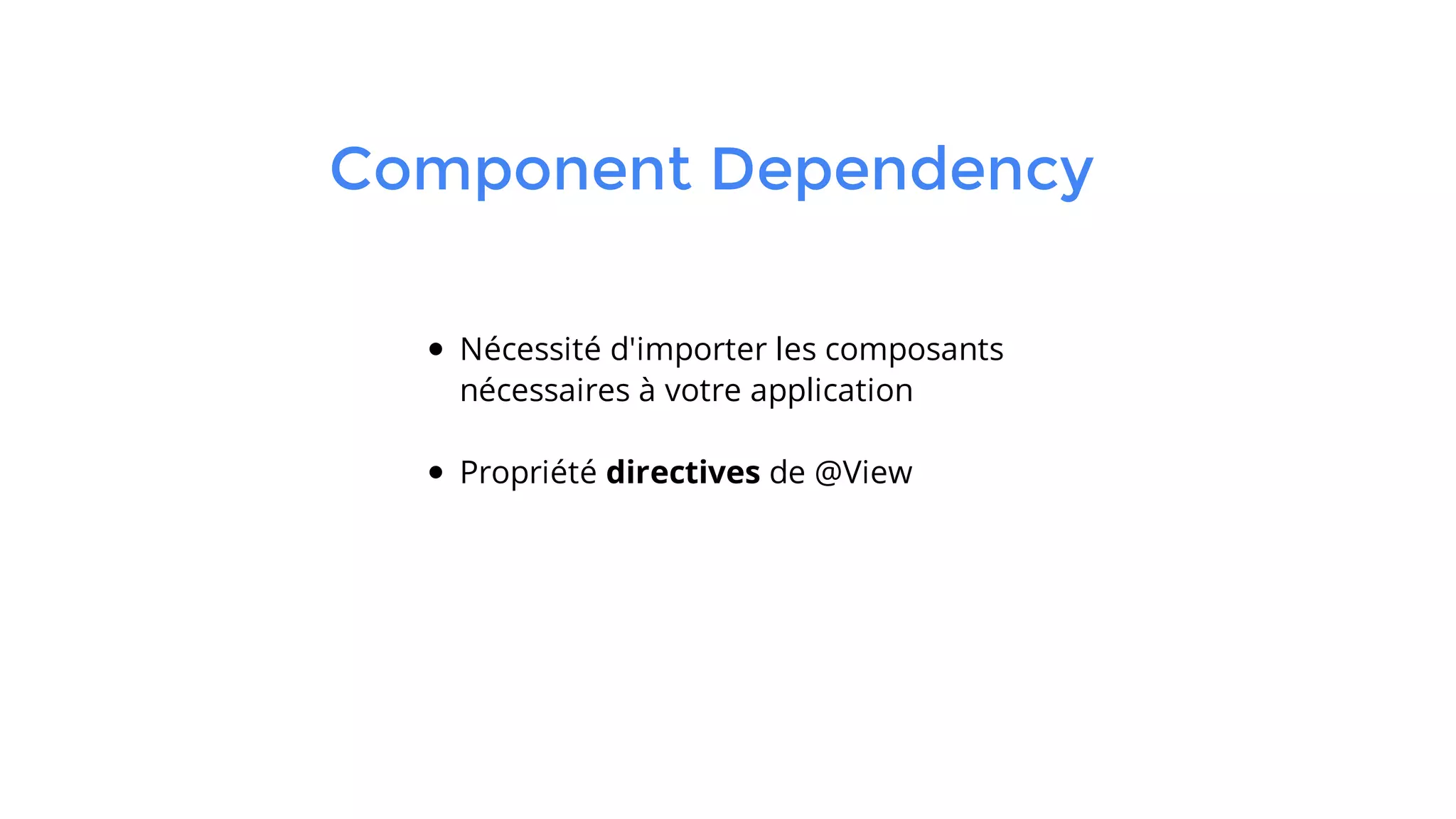
![Component Dependency import {Component, View, bootstrap, NgFor} from 'angular2/angular2'; import {BeerItem} from 'BeerItem'; @Component({ selector: 'my-app'}) @View({ template: `<main class="mdl-layout__content"> <ul class="googleapp-card-list"> <li *ng-for="#beer of beers"> <beerItem [beer]="beer"></beerItem> </li> </ul> </main>`, directives: [NgFor, BeerItem] }) class MyAppComponent { public beers: String[] = []; constructor() { } }](https://image.slidesharecdn.com/technozaure-151006181515-lva1-app6891/75/Technozaure-Angular2-48-2048.jpg)
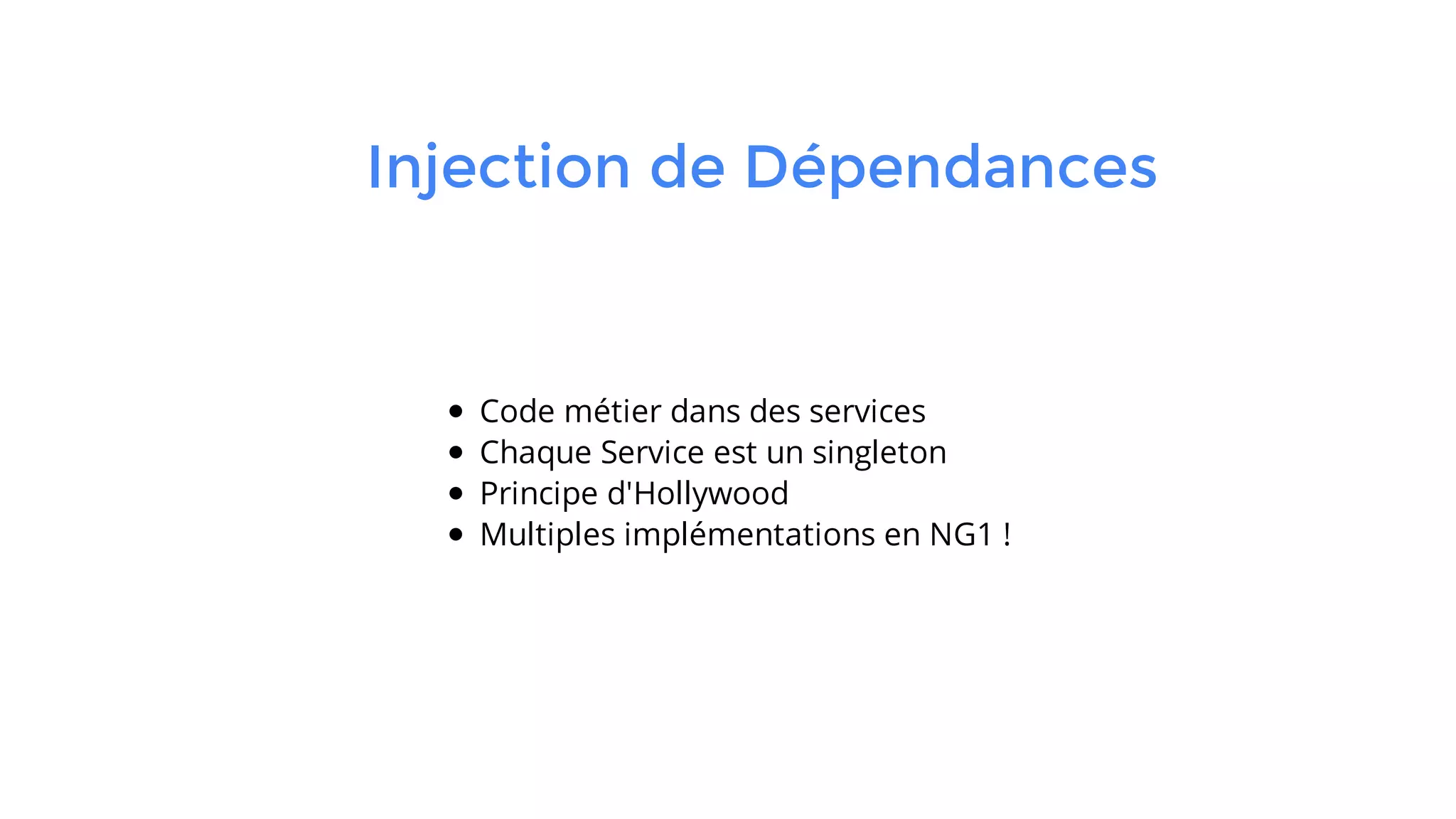


![Injecteur Principal - toValue @Component({selector: 'my-app'}) @View({ template: `<main> <h1> Welcome to our {{breweryName}}</h1> </main>` }) class MyAppComponent { constructeur(public breweryName:String){ } } bootstrap(MyAppComponent, [bind(String).toValue('Zenika Brewery')]);](https://image.slidesharecdn.com/technozaure-151006181515-lva1-app6891/75/Technozaure-Angular2-52-2048.jpg)
![Injecteur Principal - toClass @Component({selector: 'my-app'}) @View({ template: `<main> <h1> Welcome to our {{breweryName}}</h1> </main>` }) class MyAppComponent { constructeur(private breweryService:BreweryService){ this.breweryName = this.breweryService.getBreweryName(); } } bootstrap(MyAppComponent, [bind(BreweryService).toClass(BreweryService)]);](https://image.slidesharecdn.com/technozaure-151006181515-lva1-app6891/75/Technozaure-Angular2-53-2048.jpg)
![Injecteur Principal - toClass @Component({selector: 'my-app'}) @View({ template: `<main> <h1> Welcome to our {{breweryName}}</h1> </main>` }) class MyAppComponent { constructeur(private breweryService:BreweryService){ this.breweryName = this.breweryService.getBreweryName(); } } bootstrap(MyAppComponent, [BreweryService]);](https://image.slidesharecdn.com/technozaure-151006181515-lva1-app6891/75/Technozaure-Angular2-54-2048.jpg)
![Injecteur Principal - toFactory@Component({selector: 'my-app'}) @View({ template: `<main> <h1> Welcome to our {{breweryName}}</h1> </main>` }) class MyAppComponent { constructeur(public breweryName:String){ } } bootstrap(MyAppComponent, [bind(String) .toFactory((BreweryService) => { return BreweryService.getBreweryName(); }, [BreweryService])]);](https://image.slidesharecdn.com/technozaure-151006181515-lva1-app6891/75/Technozaure-Angular2-55-2048.jpg)
![Child Injector @Component({selector: 'my-app'}) @View({ template: `<main> <welcome-message></welcome-message> </main>`, directives: [WelcomeMessage] }) class MyAppComponent { constructeur(public breweryName:String){ } } bootstrap(MyAppComponent, [bind(String).toValue('Zenika Brewery')]);](https://image.slidesharecdn.com/technozaure-151006181515-lva1-app6891/75/Technozaure-Angular2-56-2048.jpg)
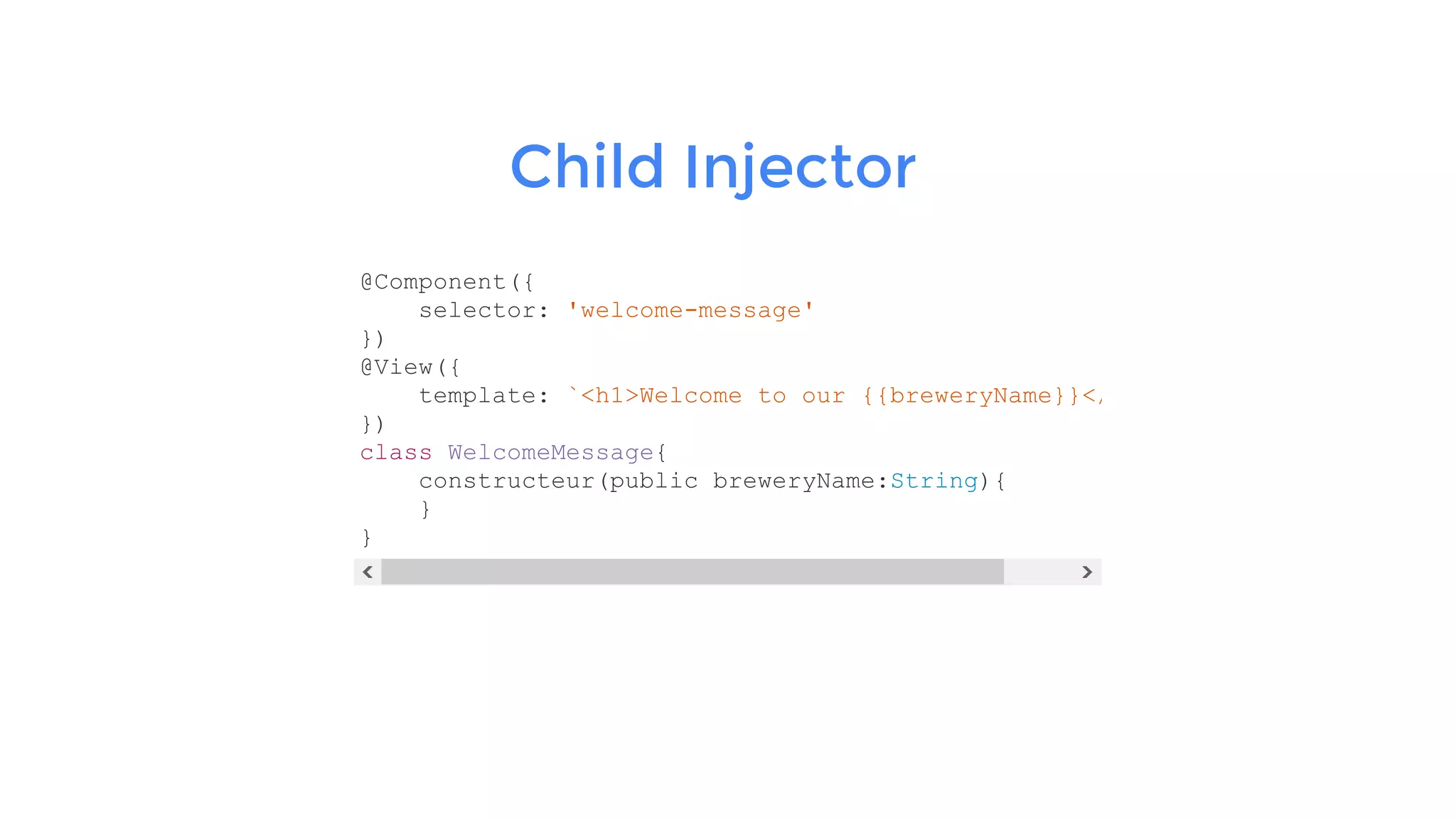
![Child Injector @Component({ selector: 'welcome-message' }) @View({ template: `<h1>Welcome to our {{breweryName}}</h1>`, bindings: [ bind(String).toValue('Awesome Zenika Brewery') ] }) class WelcomeMessage{ constructeur(public breweryName:String){ } }](https://image.slidesharecdn.com/technozaure-151006181515-lva1-app6891/75/Technozaure-Angular2-58-2048.jpg)
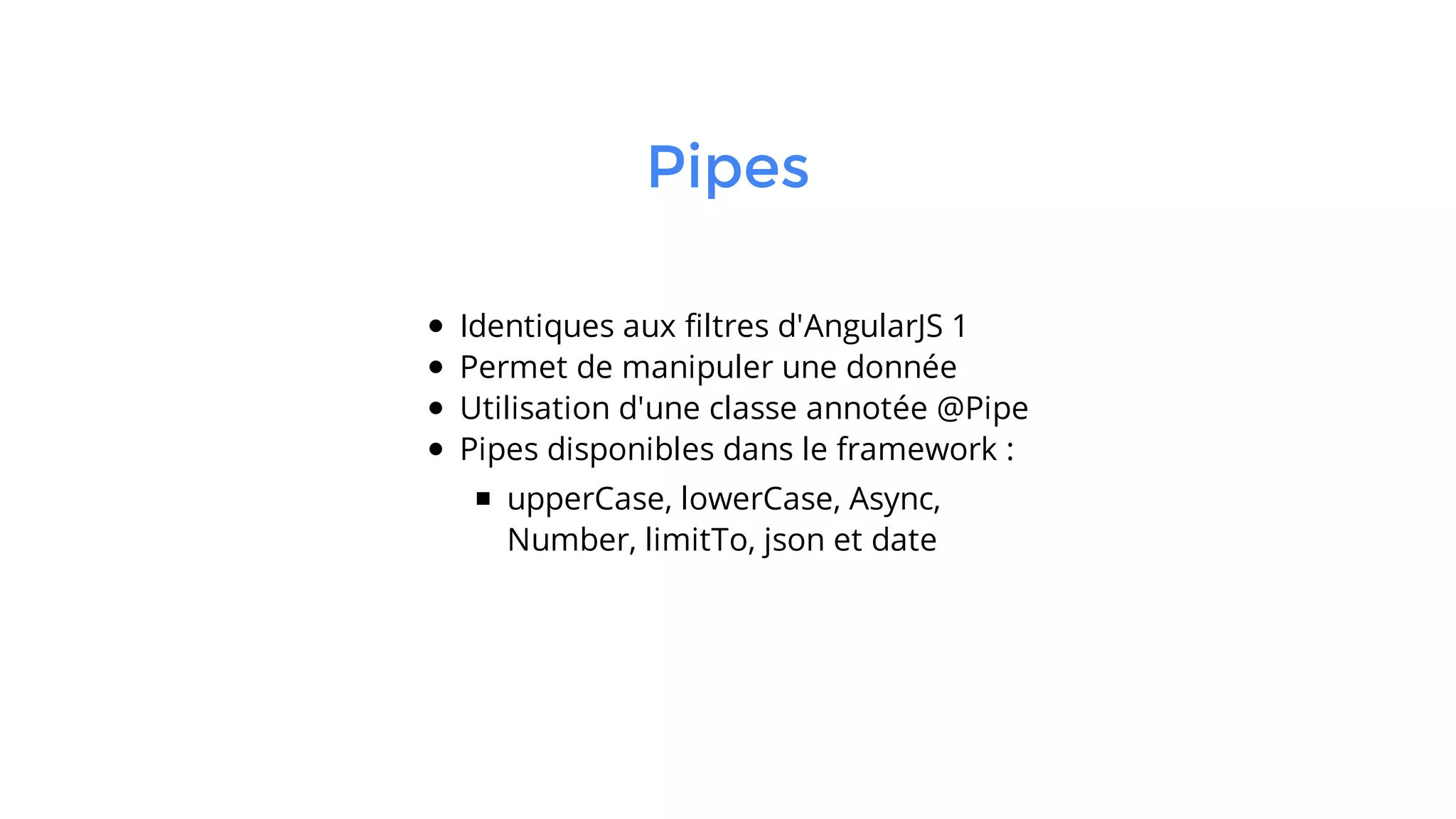
![Pipes import {Pipe} from 'angular2/angular2'; @Pipe({ name: 'UpperCasePipe' }) export class UpperCasePipe implements PipeTransform { transform(value: String, args: any[]) { return value.toUpperCase(); } }](https://image.slidesharecdn.com/technozaure-151006181515-lva1-app6891/75/Technozaure-Angular2-60-2048.jpg)
![Pipes import {Component, View} from 'angular2/angular2'; import {UpperCasePipe} from './UpperCasePipe.ts' @Component({ selector: 'comp' }) @View({ template: `<div>{{'Démo utilisant les pipes' | UpperCasePipe}}</div>`, pipes: [UpperCasePipe] }) export class Component{}](https://image.slidesharecdn.com/technozaure-151006181515-lva1-app6891/75/Technozaure-Angular2-61-2048.jpg)
![Pipes import {Component, View} from 'angular2/angular2'; import {UpperCasePipe} from './UpperCasePipe.ts' @Component({ selector: 'comp' }) @View({ template: ``, bindings: [UpperCasePipe] }) export class Component{ constructor(public upperCasePipe:UpperCasePipe){ this.upperCasePipe.transform('Un autre exemple...'); } }](https://image.slidesharecdn.com/technozaure-151006181515-lva1-app6891/75/Technozaure-Angular2-62-2048.jpg)

